THINGS TO DO IN MUMBAI – GUIDE TO GET LOCAL
Welcome to Mumbai. The city is the embodiment of the “order in chaos”, with rush hour seeing over 7000 people scramble to climb aboard trains with a capacity of 1800, a cultural capital that has served as the location of over 70,000 Bollywood movies, and a bustling metropolis with a population density of 29,000 per square kilometer (and 17 public toilets for every million!).
India is often described as a “country of contrasts” and nowhere is this more visible than in Mumbai. The city hosts the world’s most expensive house (the Antilla Building, shown below), as well as the world’s largest slum, made up of hand-built homes made of little more than cardboard boxes. The city is inhabited by artists, crooks, exotic birds, and thousands of stray dogs. If Mumbai can be described in one word, it would be “contrasts.” But it is just as synonymous with Bollywood, the biggest film industry in the world.
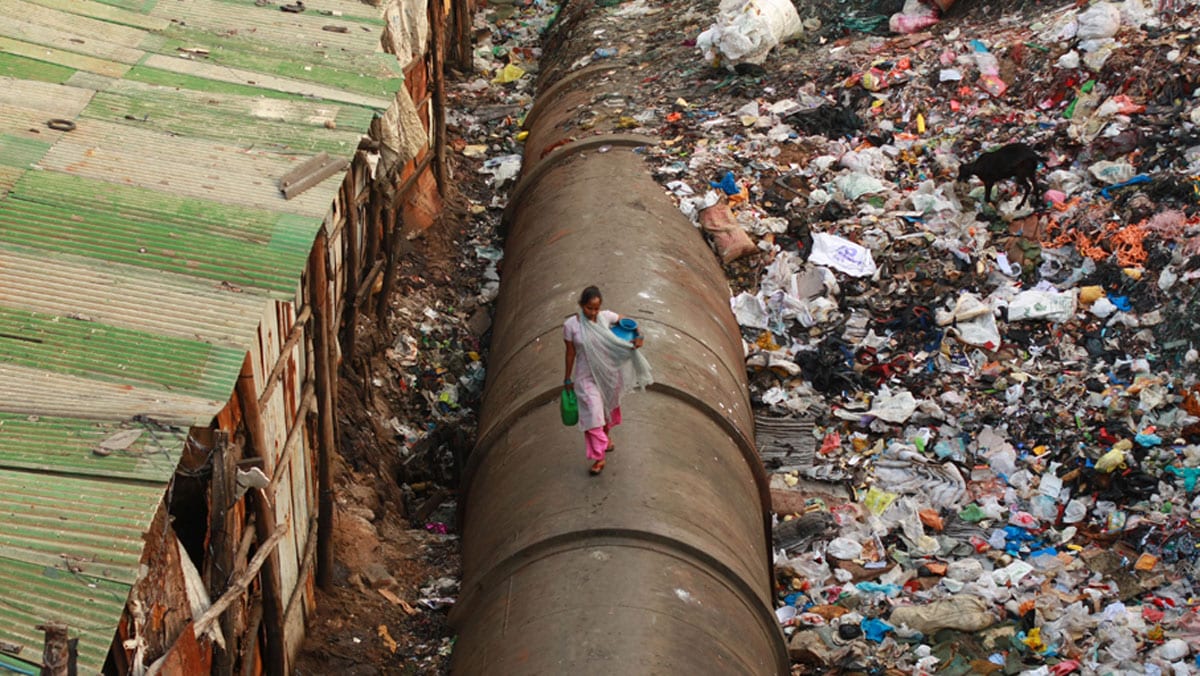
If New York is the backdrop to most Hollywood flicks, than Mumbai is its Indian counterpart. Mumbai is the heart of India’s film, fashion, and financial world. The city is the site of the most expensive property, the worst traffic, and some of recent history’s most fiery clashes. Essentially, here one can find people of every cast, religion, and employ.
India has countless sites to visit, and to be honest, it is not very wise to invest your time in Mumbai. But for those of you who want to have a quick visit, the following article should help you find enough things to do in Mumbai to make your visit worth it.
MUMBAI = BOMBAY
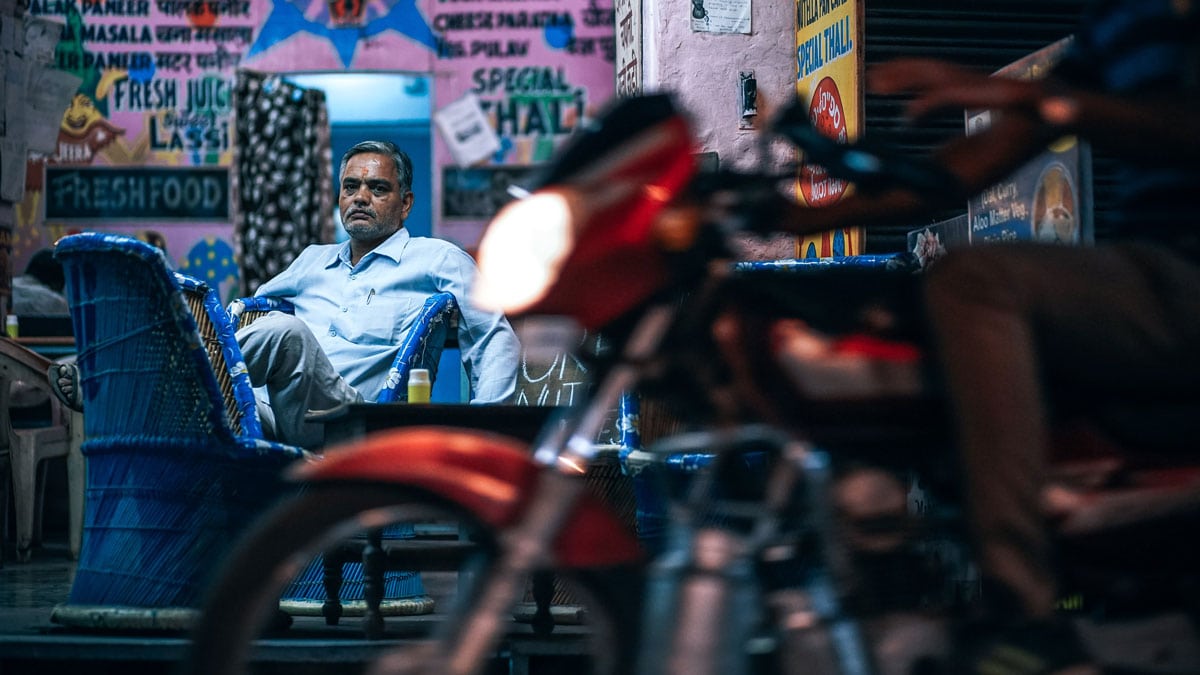
We are apparently not the only people in the world who were confused as to whether Bombay and Mumbai were two different places. The beautiful bay which forms the setting of the city, was first recorded by the arriving Portuguese as “Bombaim”. Later, when the British arrived to found the first settlements that would form the current city, the name was Anglicized to “Bombay”. In 1995, the governing party that came into power saw the name as a legacy of British rule, and thus changed it to honor the goddess Mumba Devi, a figure worshipped by the area’s native Koli people. Needless to say, with such a heritage, there are plenty of things to do in Mumbai relating to the city’s proud history.
Introduction to Mumbai
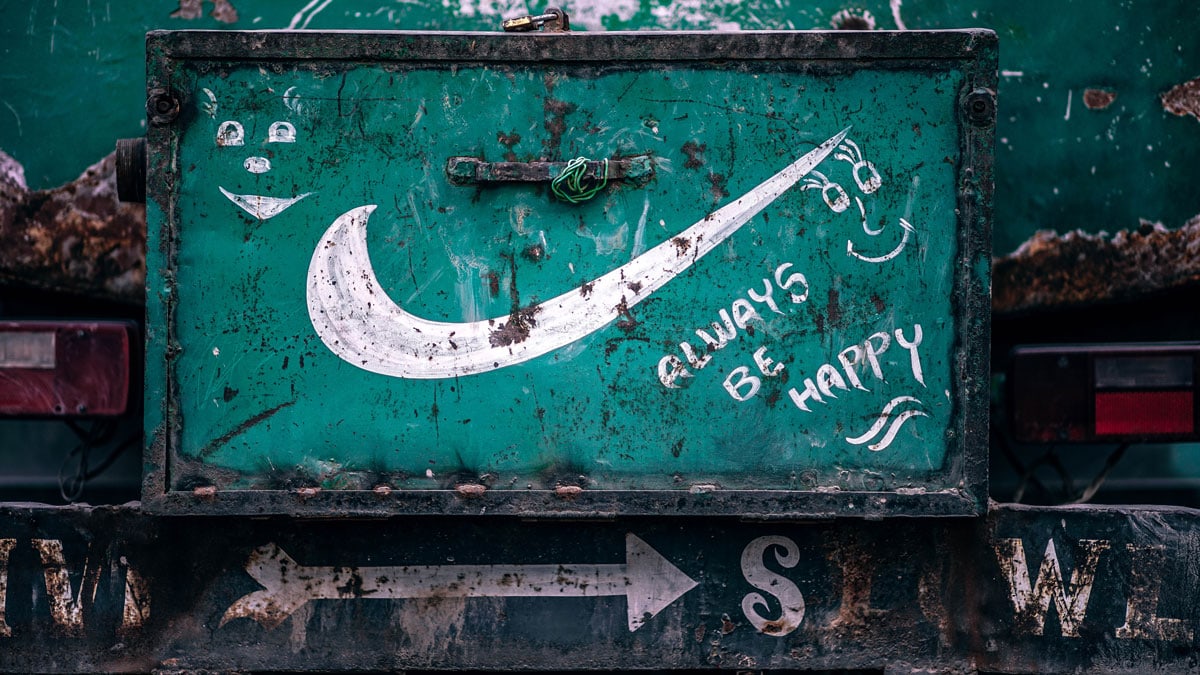
Mumbai serves as the capital of the Maharashtra State, and is built on land which used to form seven separate islands in the bay, which had been inhabited since ancient times. In 1534, the Portuguese took control of the area, naming it “Bombaim”. However, in 1661, due to a marriage uniting the English and Portuguese royal families (Catherine de Braganza and Charles II) the area was gifted to the English crown.
The Birthplace of the Raj
In 1668, the English crown decided to rent out the lands to a private trading corporation called the East India Company. Between 1817-1845, the original islands upon which the city is founded were joined together as part of a mass recovery project. Due to its excellent situation as a port, the company made huge gains from their lease, to the degree that they would soon start itching to expand their influence, eventually taking authority over most of the subcontinent. Viewed in this way, it is apparent that the conquest of India was not a pre-ordained British project, but more of series of opportunities that were taken bit by bit. This company expanded from a trading corporation to become the engine which transformed England into the head of a global empire. When the British authorities awoke to this emerging situation, they would eventually take full command of its maintenance and expansion.
Mumbai’s Global Impact
Global events also combined to shape the success and growth of the city; the main of these being that cotton, which had been grown overwhelmingly in America and exported across the world, would see a huge decline with the onset of the American Civil War, and so India was able to pick up the slack and take the mantle of the global cotton trade in these years. With the opening of the Suez Canal, imports gained even easier access to European markets, making the East India Company an even more powerful player in global affairs. But this marked the beginning of the end, and Britain would soon intervene to formalize its governance of India. By the 1940s, the city had become a hotbed of revolt and the independence movement surged to a point where Britain had no choice but to make way for a free India.
Today’s Mumbai
Today, the east side of the island is mostly dominated by port areas. The city’s financial and cultural heart beats in the south. The peninsula on Mumbai’s southernmost point marks Coloba – the most touristic area of the city. Mumbai’s slum areas spread out along its northern tiers, and have grown in fame thanks to their depictions in movies such as Slumdog Millionaire. However, ever the city of contrasts, Mumbai’s best restaurants, nightclubs, and shopping centers are also located in the very same area.
HOW TO PLAN YOUR TRIP TO INDIA
– Our Life in India Guide (General information about the country: what kind of place is it for travelers, religion, caste system, misconceptions about cleanliness and everything you need to know before you go)
– Our India Travel Guide (budget, route, alerts, as well as suggestions and preparation tips before you go)
TOP THINGS TO DO IN MUMBAI
Some incredible works of architecture were left by the British, and it is fascinating to see these buildings as an example of the presence they felt in the subcontinent, but what is most fascinating here is neither the architecture, nor the history, but the socio-economic contrasts in the modern city. To witness this, we recommend three particular things to do in Mumbai.
1. Mumbai’s Most Famous: The World’s Largest Laundrette: Dhobi Ghat
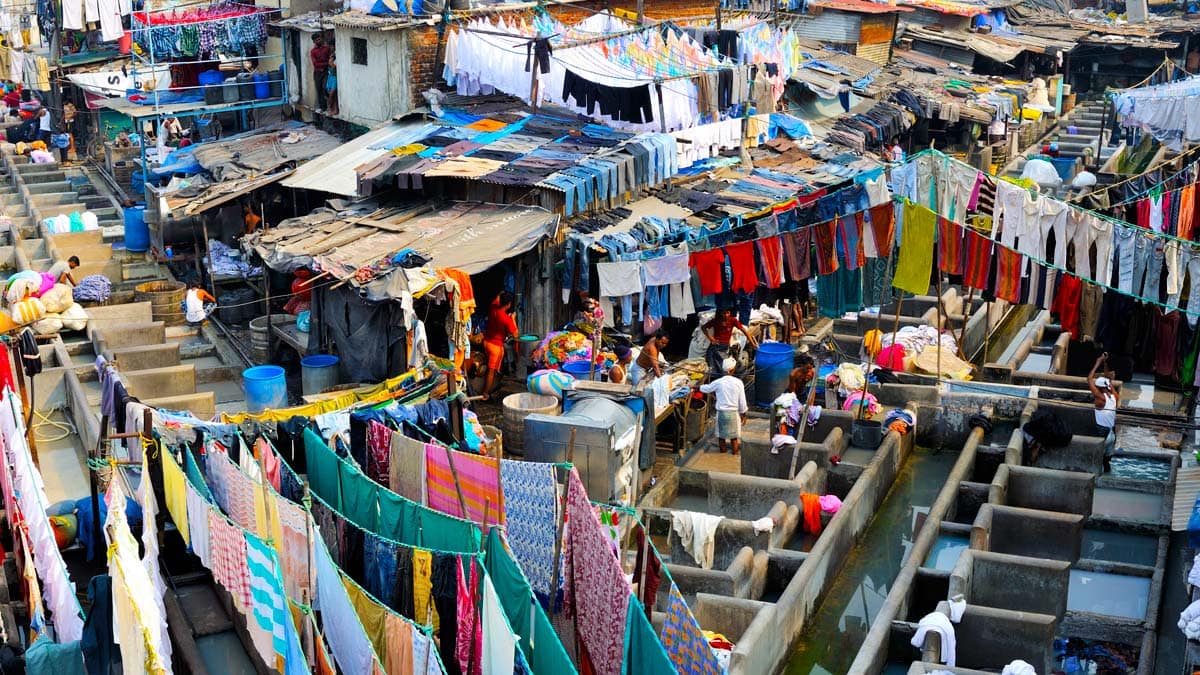
If you have only one day to get your filll out of things to do in Mumbai, we certainly recommend visiting Dhobi Ghat, located right next to the Mahalaxmi Train Station. The site was built during the time of the Raj in 1890, and is the world’s largest launderette – a remarkable site, for sure.
The Dhobis, as they are called, have worked this profession for generations, and clean the towels, bed sheets, and linen for Mumbai’s biggest hotels and hospitals. Each worker takes a cleaning stone, and uses it to scrub each fabric one by one. Over 7000 people per say work here for 18-20 hours at a time washing over 100,000 items over the course of the day. Some of the launderette’s biggest clients include confectioners, hotels, clubs, and restaurants. Top of the list of things to do in Mumbai as a visitor is to watch the dhobis of Dhobi Ghat at work. The best times are early in the morning, when washing is in full swing, and towards sundown, when the items are hung out to dry.
2. Asia’s Biggest Slum: Dharavi
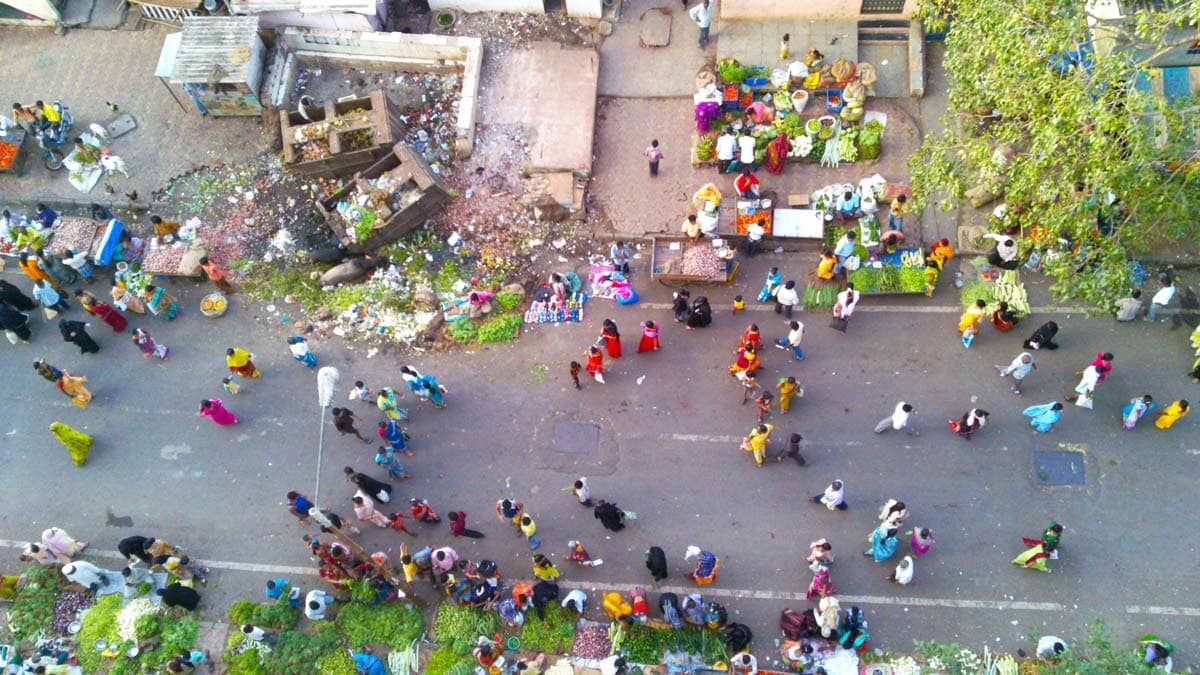
Second on our list of things to do in Mumbai is to explore Asia’s largest slum, Dharavi, home to over a million residents. In our view, this is far more fascinating than the launderette, but most people seem to prefer the latter. You won’t find a more brimming place than Dharavi in your lifetime. You can see areas where metals and plastics from all over the world are sent and separated, and watch the sun rise and set over the tin roofs of the hovels. You can also contribute to the health and economy of the area by grabbing a bite to eat from one of the local shacks. Tours lasting 2.5 hours are also available. For details on those, check out: Reality Tours
3. Live the Bollywood Life
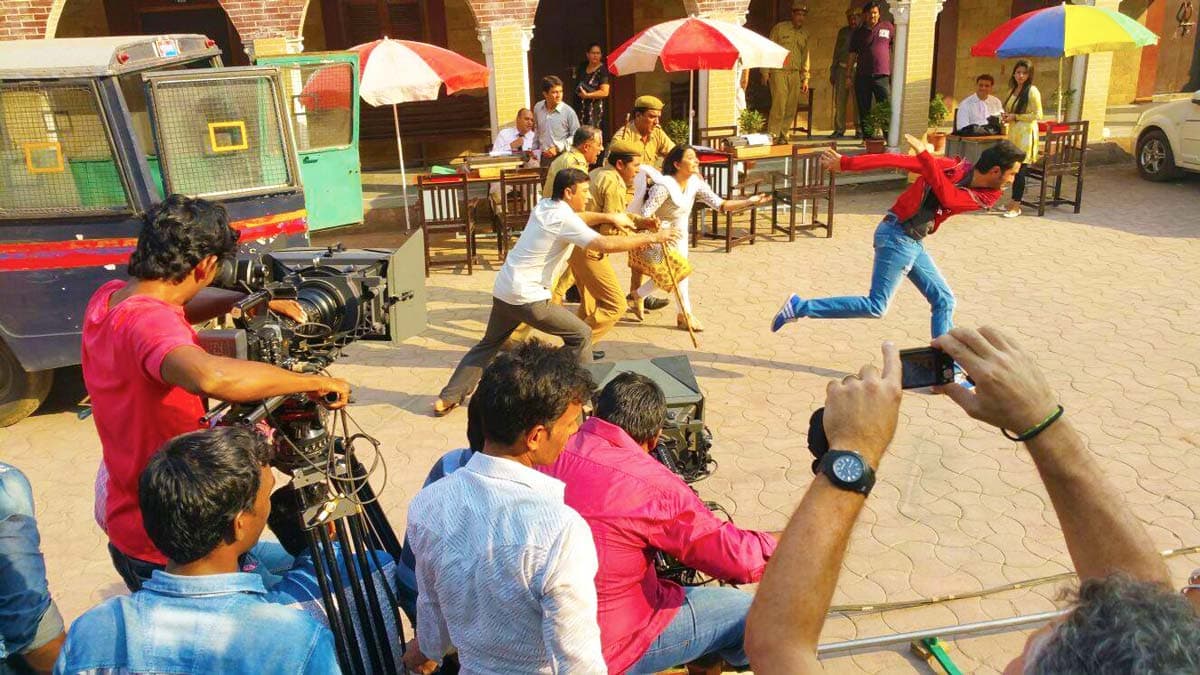
Mumbai is very much the LA of India, home of the world’s biggest movie industry. Most visitors look forward to the chance to bump into one of India’s big Bollywood stars, and if it’s going to happen anywhere it will probably be here. You even have the chance to attend the set of a Bollywood movie or Indian TV drama if you are here, and enjoy watching the amazing choreography. Mumbai’s biggest film studio’s are generally located at complexes near the Sanjay Gandhi National Park. This huge complex, built in 1911, is the largest in the country, and a variety of tours are available. You can check them all out at this site.
Become a Bollywood Star
Of all things to do in Mumbai, the luckiest visitors are actually cast in a Bollywood movie themselves. The studios are always looking for foreigners to populate the background of scenes set in other countries. This hasn’t escaped the knowledge of many visitors, who arrive on Coloba Causeway waiting for a call. But you might have to wait a while, because the work never stops on set.
4. Three Icons of the City
Of all things to do in Mumbai, the three above are no doubt top of the list. As for the rest, it really depends on how much time you have, unless you would rather tour India’s other countless places of interest. The next part of our article describes the rest of the sites the city has on offer. If you have time, be sure to check them out.
If you have Time…
5. Pose in the Hipster Kala Ghoda Area
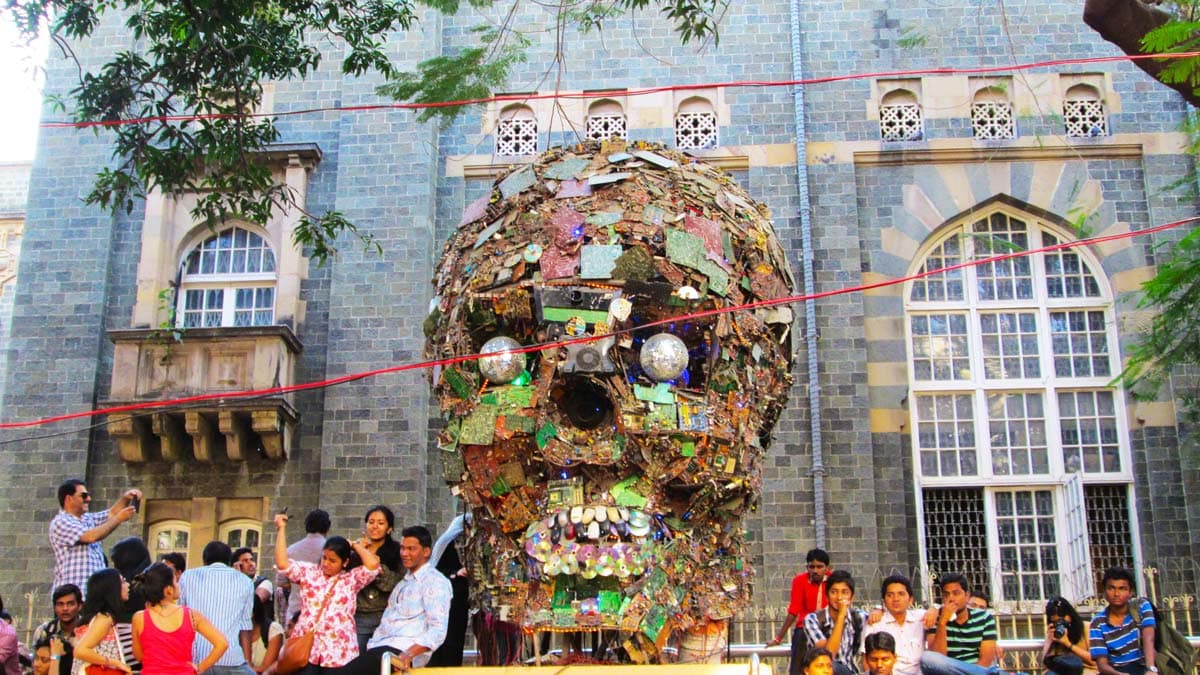
The area between Coloba and Fort is home to colonial architecture from the 1860s, as well as many cafes, museums, and art galleries. Think of this as Mumbai’s Shoreditch, The Village, or Brera – the cool, hip, happening place. Check out the galleries and designer stores before choosing from a wealth of lunchtime eateries. You might like to try a staple of local cuisine for 50 years, the Trishna fish restaurant, and sample its famous garlic butter crabs. February sees the Kala Ghoda Festival take place here, when all traffic is closed off from the area to make way for exhibitions from India’s latest up-coming artists.
If you are looking for things to do in Mumbai that expose you to contemporary art, then this is the place to explore, but bear in mind that India’s biggest art hub is undoubtedly Delhi. For more info, click on our Delhi page.
6. Attend the Ganesh Festival
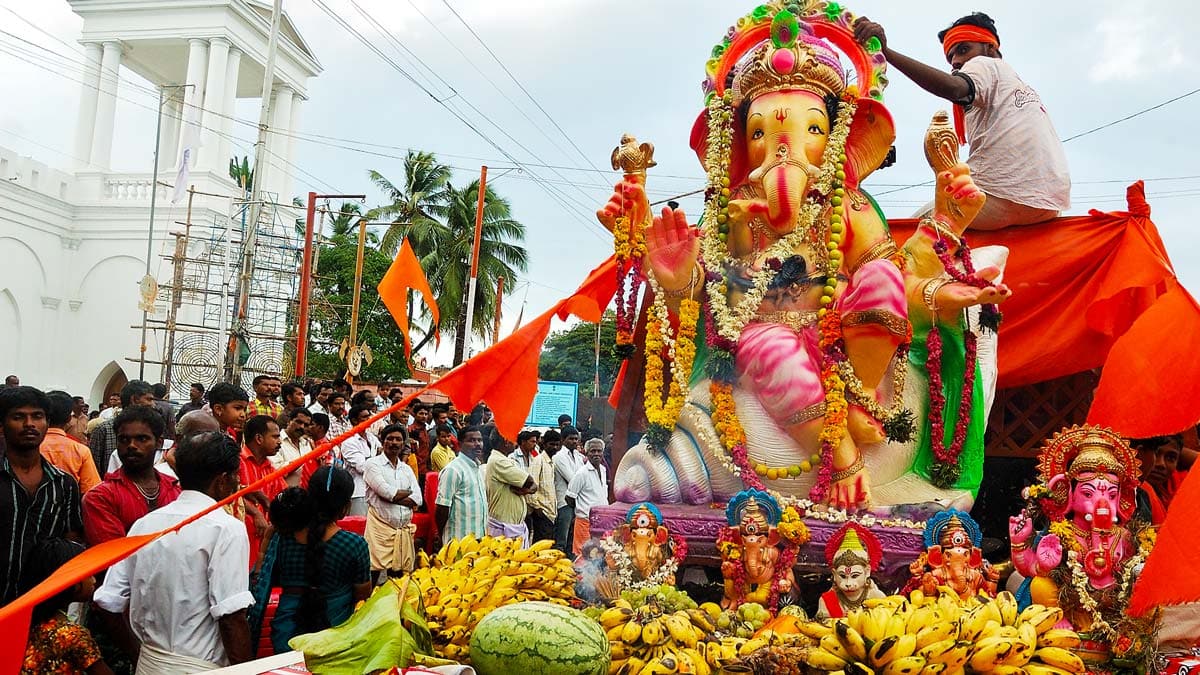
In terms of events, many things to do in Mumbai fall alongside religious and national festivals. Ganesh Chaturthi is a ten-day festival that takes place in August and September in the name of the elephant headed god, Ganesh. The Hindu faithful gather on these days to pay respects to one of their religion’s central deities, concluding with the dropping of a giant statue of Ganesh off the coast of the Chowpatty area, praying for his return. The idea of this ceremony is to send Ganesh away carrying the sins of the year with him. This year’s Ganesh Festival takes place between 2-12 September 2019.
Note: Don’t forget that this is the hottest period of the year in India, so it could be a bad time to visit if you can’t handle the heat.
We suggest you read about Religion in India and What Hinduism is here.
7. Tour the Markets of Colaba
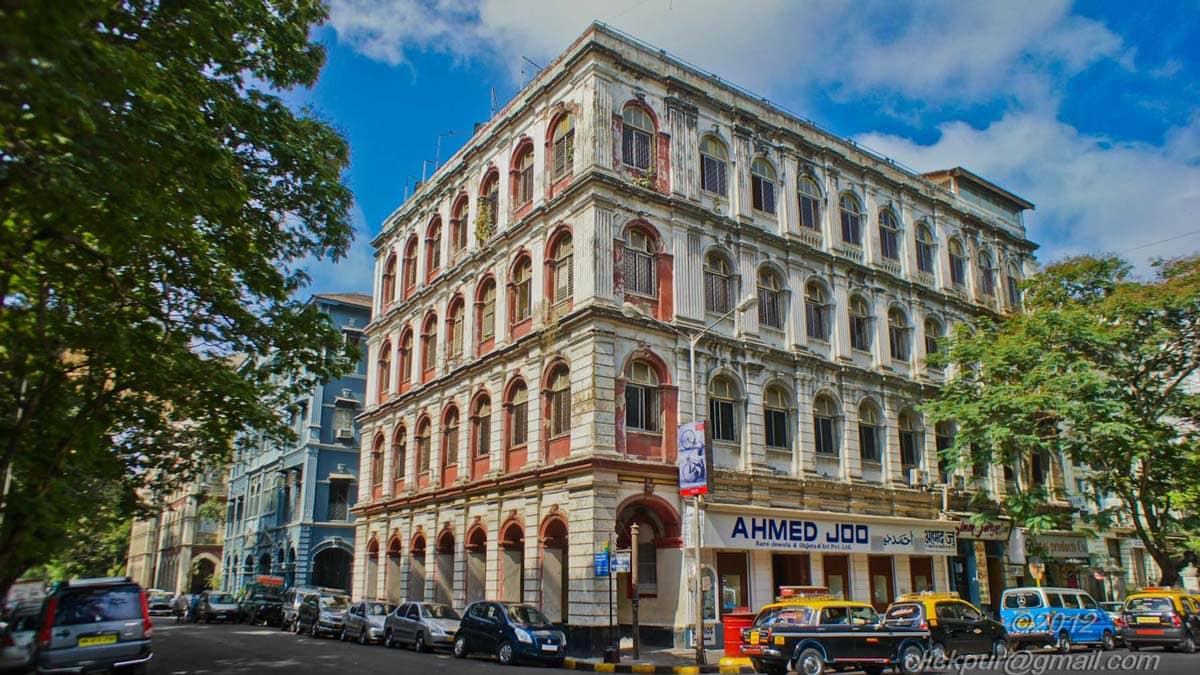
Colaba, at Mumbai’s southernmost point, is a vibrant and bustling, albeit striped down, commercial hub full of interesting bazaars and bars and is the best place to start out on the hunt for things to do in Mumbai. The best time to be there is around five in the morning, when the fishing boats set off from Sassoon quay to seek bombil in the bay waters. The area has a number of interesting sites on the outskirts, such as Gateway of India, Taj Mahal Palace, and the Tower.
8. Head to Elephanta Island
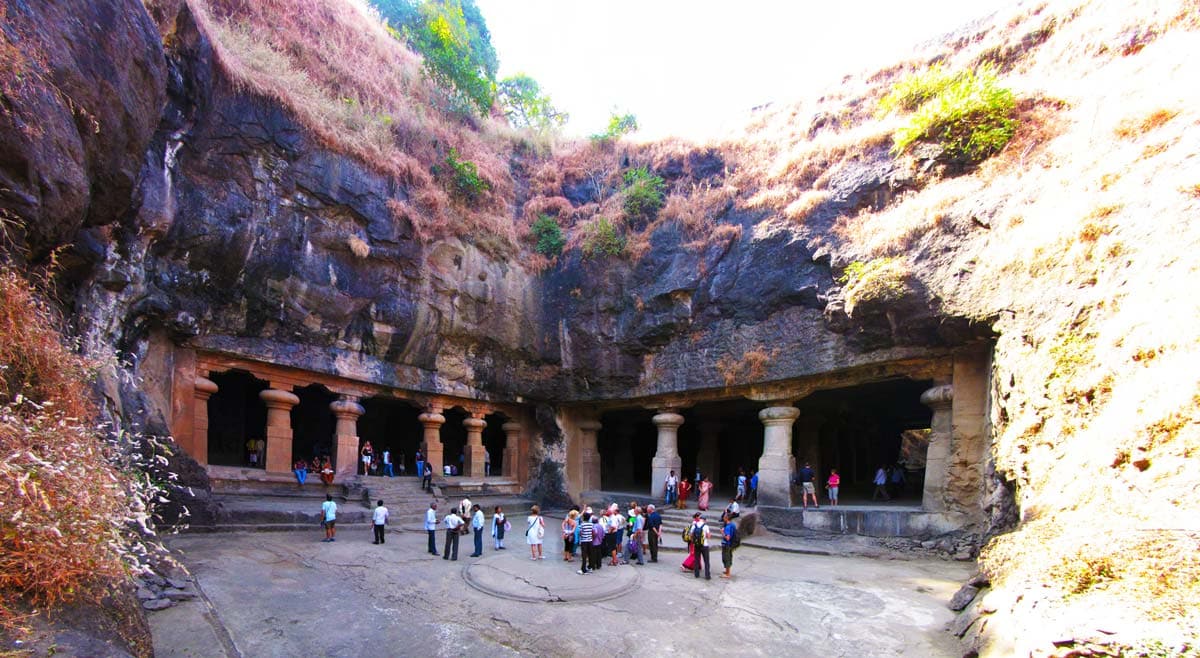
From the Gateway of India, you can board a boat for 100 – 150 rupees, any time between 9am and 3pm between Tuesday and Sunday, and head towards the UNESCO-protected Elephanta Island. The island is home to a giant statue of one of Hinduism’s top three gods, Shiva, and a basalt cave temple, which was carved into the rocks in the 15th century and exploring the caverns is top of many lists of things to do in Mumbai. The caves can be found a short ten minute walk from where the boats are tied. You arrive at the cave by traversing 200 steps. Visitors are greeted with women carrying water via traditional means. Of course, the place is teeming with people looking to cash in on a photo opportunity. The island is also home to 10,000 monkeys – so this is definitely a place to keep your camera on you (just make sure it stays out of reach of the monkeys). In the month of February, the island is also host to a celebration of classical music and dance, the Elephanta Festival.
9. Watch Cricket in Azad Square, Cross Square, and Oval Square Kriket
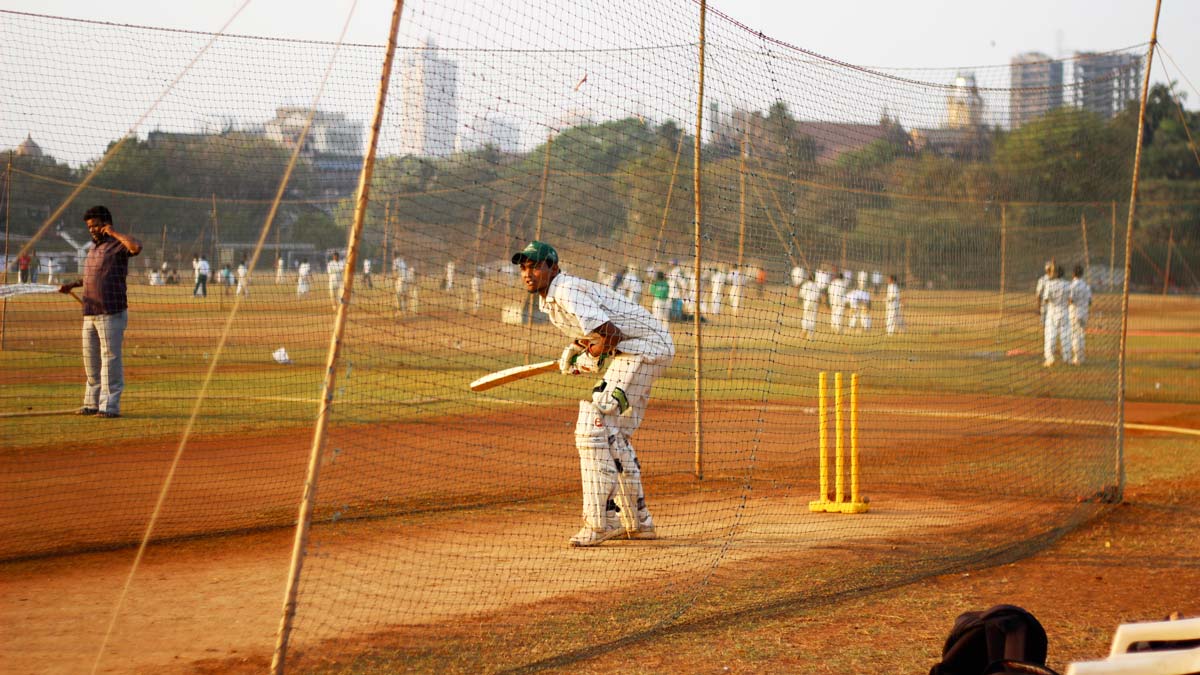
If you thought cricket was just game with two teams of eleven playing with a ball and a stick, you’re wrong. In India, the game is like a religion. For residents, one of the top things to do in Mumbai on the weekend is to play cricket or football at the city’s centrally-located Azad, Oval, and Cross Squares. Of course, you’ll also see people enjoying yoga, jogging, and simply chilling out here, too. The triangular Azad Square is particularly keen on hosting cricket matches between local schools.
10. Catch a Bicycle Tour
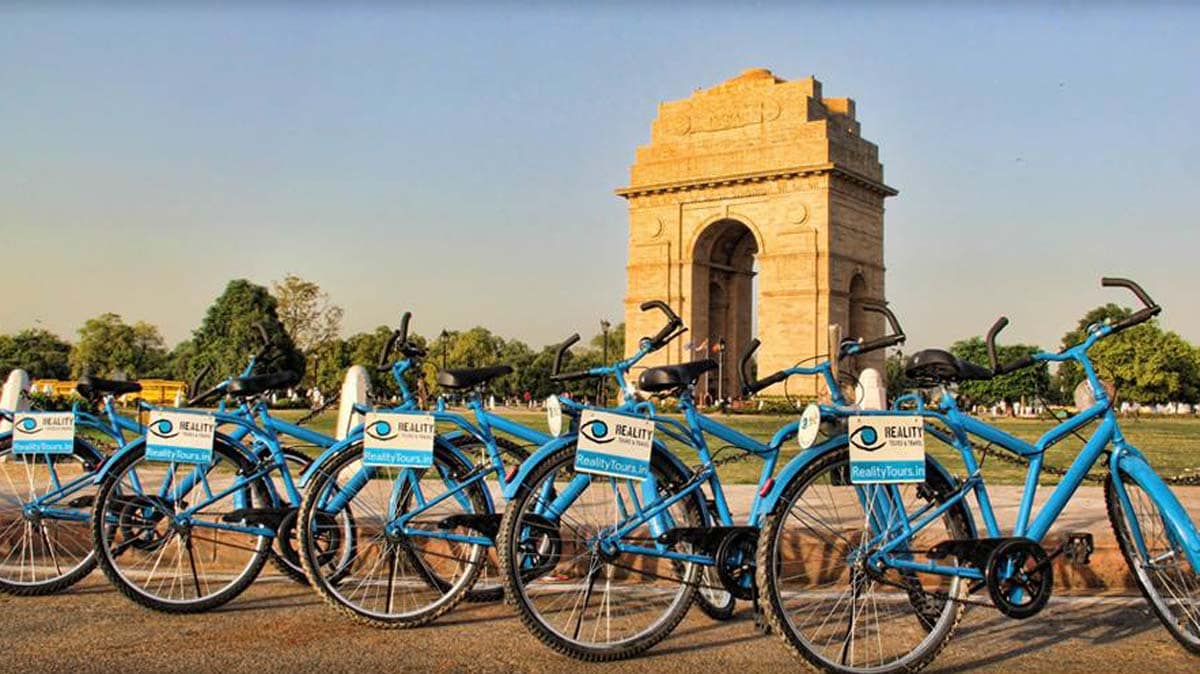
Biking is also a great idea in India – as long as you avoid the chaos of rush hour times. When the evening breeze arrives and Mumbai gets a little calmer, this is the best time cycle along marveling at the lights of the city. Reality Tours offer a bunch of things to do in Mumbai, and organize bicycle routes for 15 euros to join. The tours generally start out at the Gateway of India monument and pass by the Taj Mahal Palace, the Asiatic Society Library, Chatrapati Shivaji Station, Zaveri Market, Banganga Tank, the Zorastrian Tower of Silence, the world’s most expensive home, the Antilia Building, the colorful Jain Temple, the shrine of Haji Ali, and the Worli Castle.
11. Sunset on the Chowpatty Shores
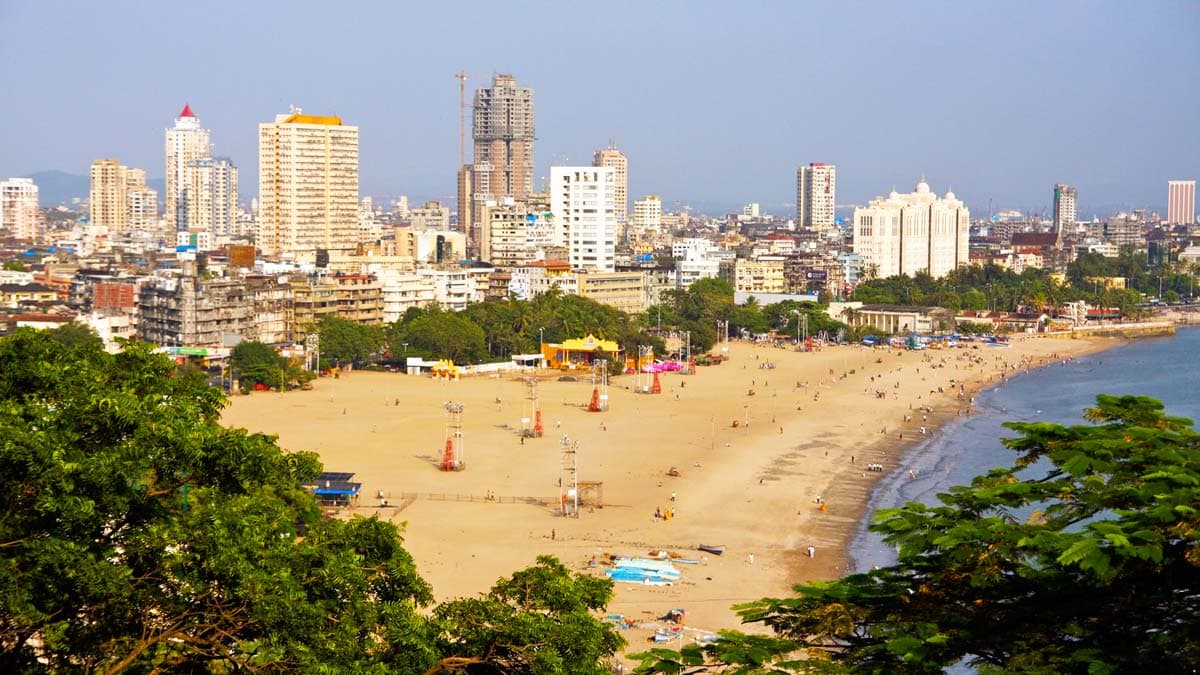
This is the heart of Mumbai’s nightlife scene, but worth avoiding in the day time, as the coastline is visibly quite polluted. What may once have been a beautiful beach area is now unfortunately full of litter. But when the sun goes down, the surrounding area is full of glitzy food stalls and if you are looking for things to do in Mumbai in the evening, it’s a great spot to explore. Whatever you do, make sure you enjoy a stroll up Marine Drive. Click here for location.
12. Explore Colonial History at the Fort Area
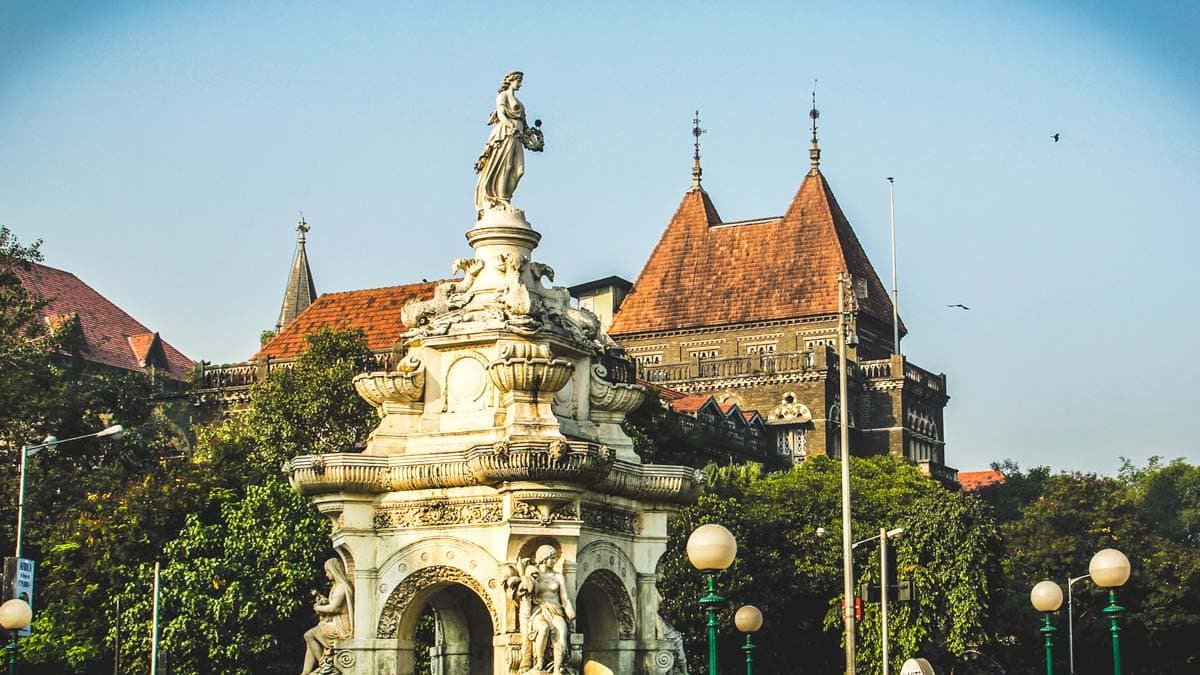
This area contains most of the art-deco buildings left by the British from the time of the Raj, a former center that now serves as the home of the city’s finance industry. The area lends its name from the fortress built by the East India Company and hosts the Victoria Terminus Train Station, Kala Ghoda, Azad Square and a number of other famous sites meaning visitors can tick a number of points off their list of things to do in Mumbai here.
13. Arrive in Time for the Holi Festival
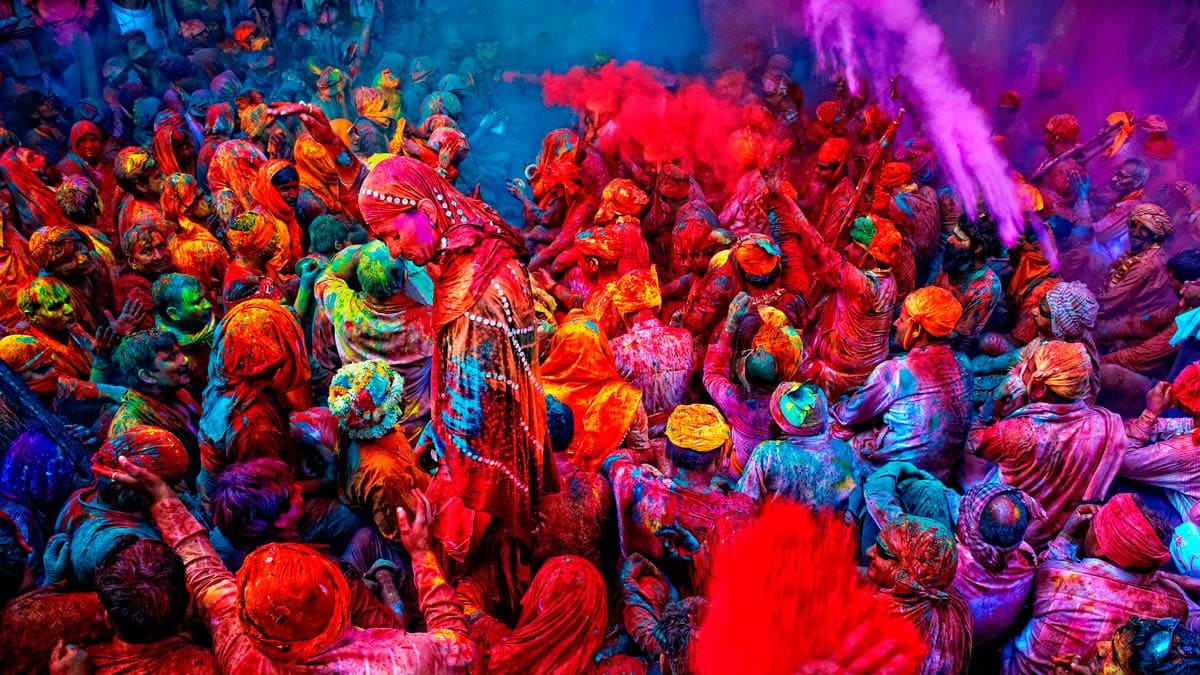
The most colorful of Hindu holy days, the March Holi festival, is no-one enjoyed better than in big cities like Mumbai, Delhi, and Jaipur, as outside these big centers, the festival takes a more traditional, humble form. If you are looking for a Holi where paint bombs are thrown in their millions accompanied DJs pump in music, then there are plenty of things to do in Mumbai here. The Holi season is accompanied by pool parties and stadium events across the city. More information is available on this page.
14. Discover the Chor Bazaar Flea Market
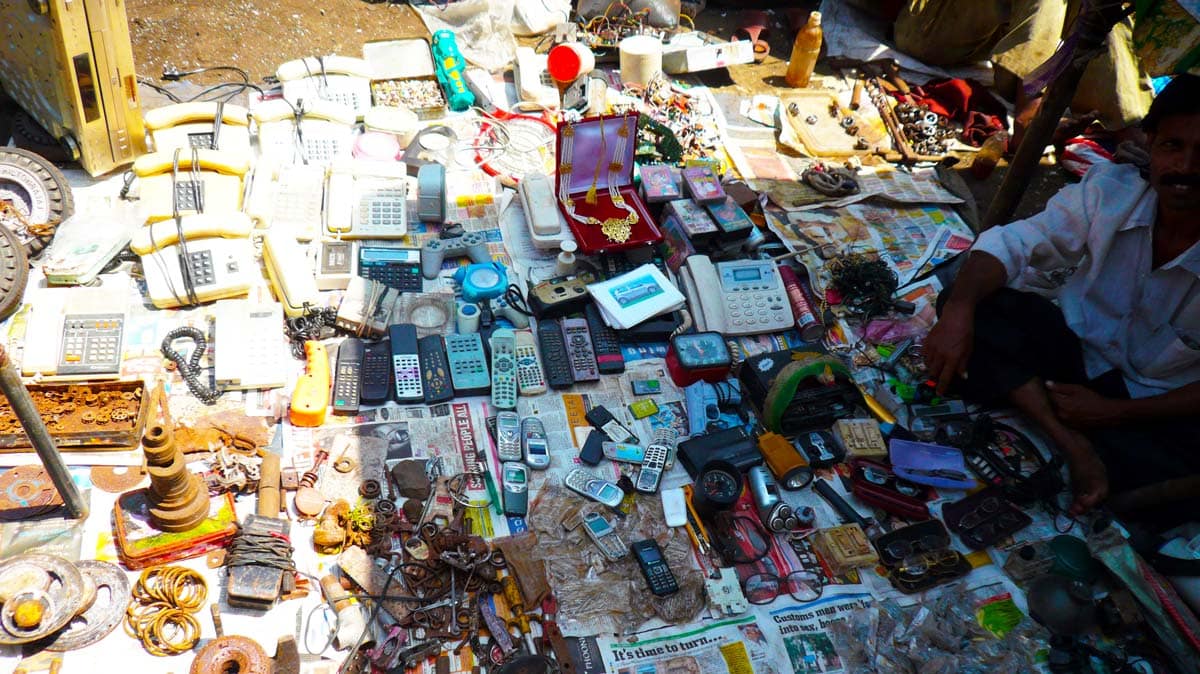
This historic bazaar forms the largest flea market in the city. According to local legend, the Chor Bazaar, or “Thieves’ Bazaar”, and is apparently where you should go before the police when something that belongs to you has been stolen! The market has been in place for 150 years, and is where a successful bid was supposedly made on a ship that was lost by Queen Victoria on its foray to the subcontinent. All sorts of items are available here, from valuable antiques to second-hand car parts – so if shopping is top of your list of things to do in Mumbai, you’re in luck!
15. Kick Back Mumbai-Style on Juhu Beach
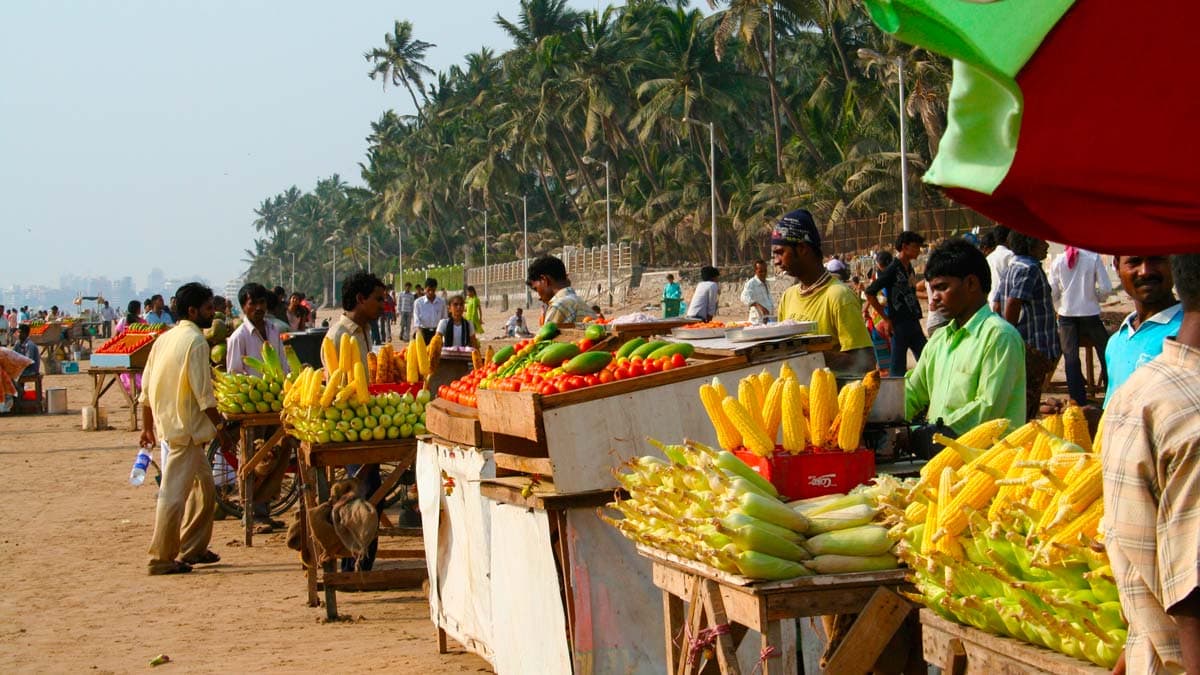
Juhu has a shoreline as famous as that of Chowpatty. The area is a draw for visitors from across the world and is frequented by joggers, sunbathers, swimmers, groups of friends playing football or cricket, picnickers, yogis, and cyclists. Most popularly visited during sunset hours, horse riding is one of the most popular activities on the beach. There are also huts where you can have henna decorate your hands, and plenty of eateries selling aloo tikki, paani puri, pav bhaji and other street foods.
16. Walk Along Marine Drive
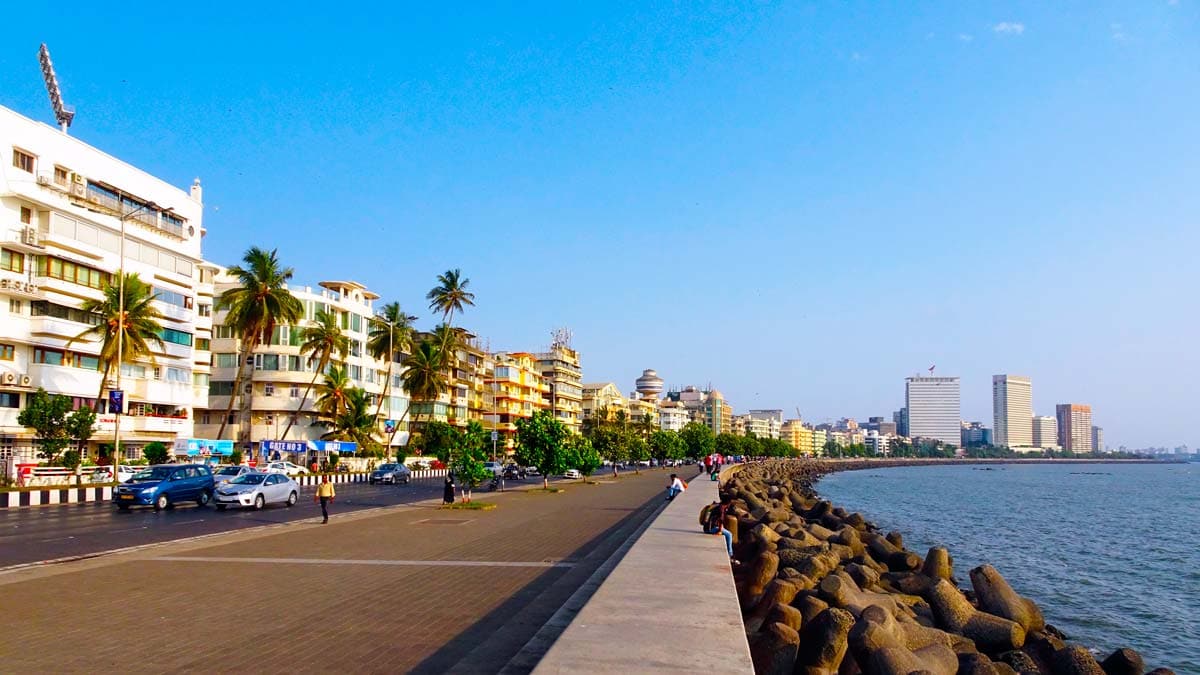
Marine Drive is known as the “Queen’s Necklace” because when the sun sets, the dazzling lights along the strip make it appear as a bejeweled string of beads. The drive is the most popular place for residents looking for things to do in Mumbai and is full of families out with their kids, couples enjoying a walk; friends out snacking. For us, the most interesting time was at 6am, on return to Central Park, when the city’s financiers, business moguls, and office bigwigs are all out jogging around the area. The road is dotted with art-deco buildings from the 1920s and 30s, so enjoy snapping your way through before stopping off for a chai and Street snack like roasted chestnuts. Sunset is also a great time to be around here. Plus, cricket fans will want to pay respects to the nearby Wankhede Stadium.
17. Enjoy a Sunset Boat Tour
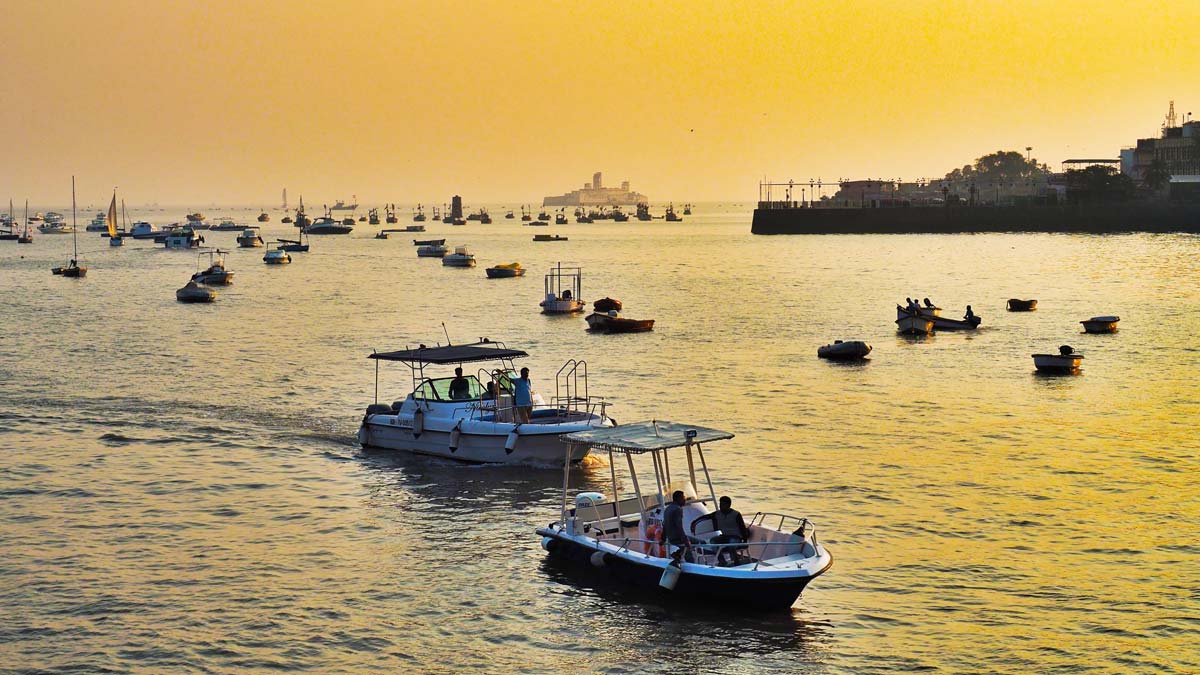
Gazing out from a boat toward the famous Gateway of India monument, glass of wine in hand and snacks by your side, is one of the sweetest of things to do in Mumbai – not least as it gives you a little respite from the maddening crowds. Check out the trips offered by the Ocean Blue yacht company.
18. The Street Food is Pretty Popular, But We Don’t Recommend
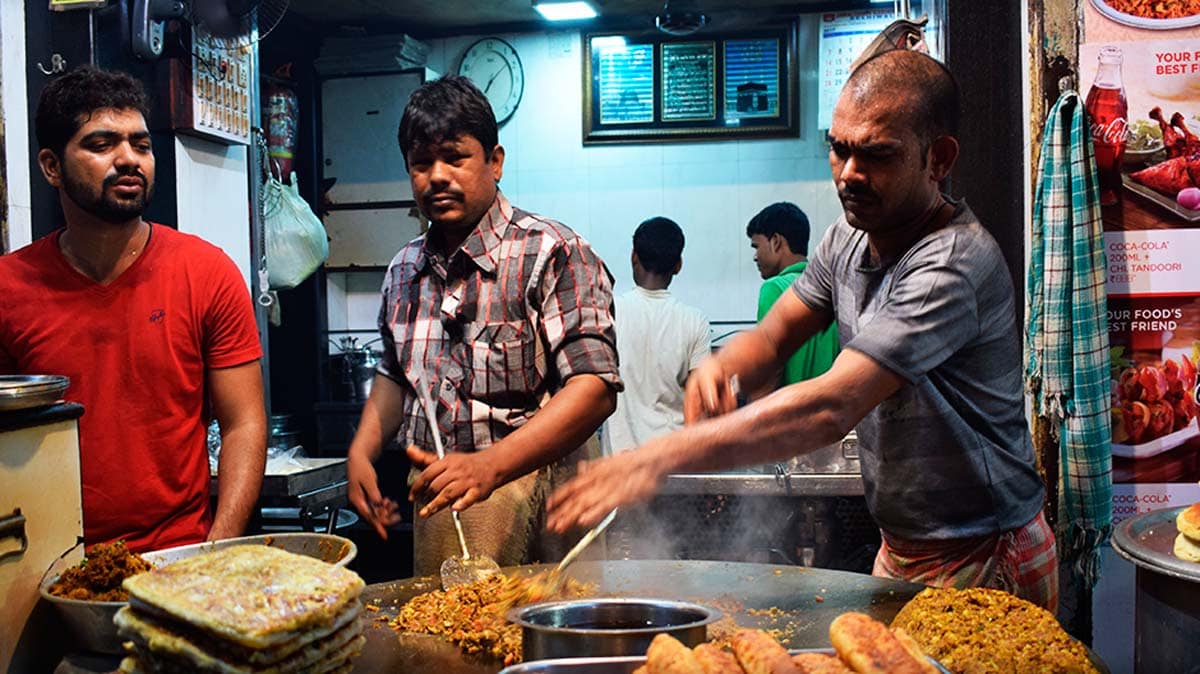
Don’t say we didn’t warn you, but when it comes to food, India has certain issues. Few people visit without falling ill at some point, and street food is normally the culprit. You don’t want to waste your limited holiday days in bed, after all, so in our view, don’t fall to the temptation of street food. Be sure to check this out in greater detail in our Tour Guide of India.
If you do decide to put a food tour on your list of things to do in Mumbai, however, the popular tour begins at the Chowpatty Beach and continues until sunset, with visits to dahi puri, pani puri, pav bhaji stalls, as well as India’s famous iced dairy dessert, kulfi. Khau gallis, or food bazaars, can be found all over the city. The khau galli in the lively Muslim area around Muhammed Ali Street is full of non-vegetarian choices, such as kebab and chicken tikka. A jalebi dessert is always recommended to cap off a good meal. Click on the Reality Tours website for more details.
THINGS TO DO IN MUMBAI
Here are some of the city’s biggest attractions, with the top of the list undoubtedly capped with the Gateway of India, the Taj Mahal Palace, and Victoria Train Station.
The Gateway of India

This colonial victory monument based on 16th century Islamic designs looks out over the local port. The monument was order by King George V after his 1911 visit, and completed in 1924. The arch serves as a favorite meeting place for locals and is an ideal tourist spot. The boats leaving for Elephanta Island are also located here. Click for location.
The Taj Mahal Palace Hotel
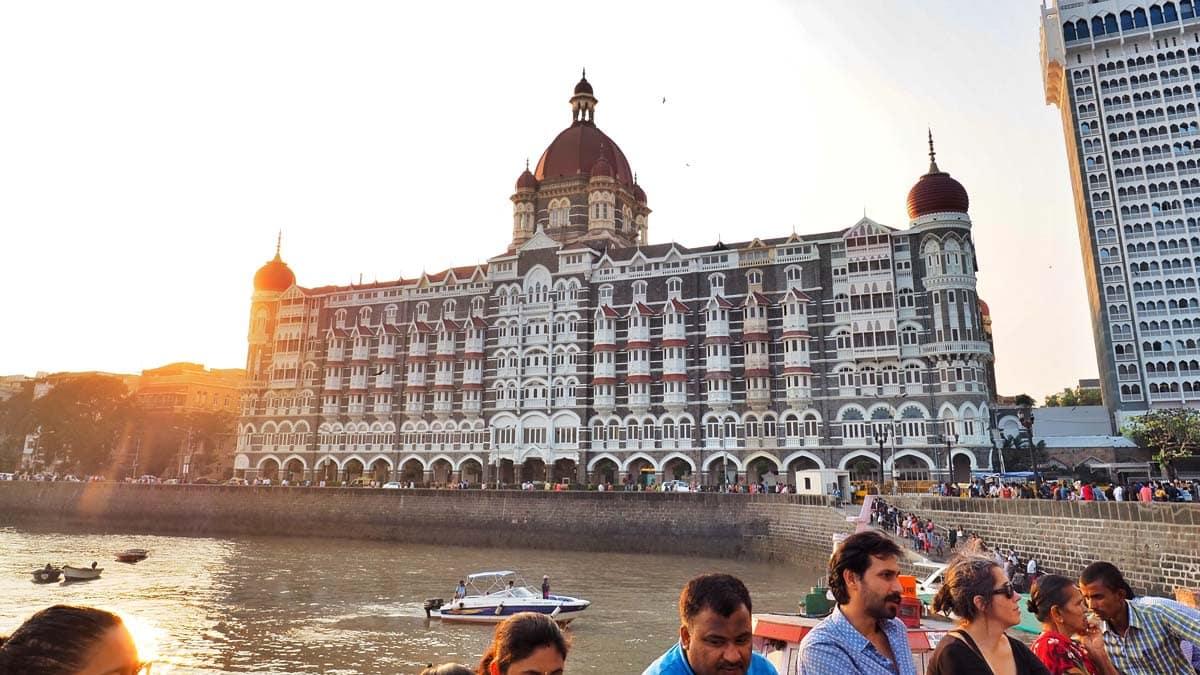
The subject of an entire National Geographic documentary, this hotel serves as a symbol of India’s riches and power. The hotel has hosted countless famous names, from President Obama to Angelina Jolie, has 560 rooms and 44 suites, and is staffed by 1600 people, including 35 butlers. This grand piece of architecture, built in 1903 and combining Renaissance and Islamic influences is effortlessly charming, but unfortunately was the site of a prolonged terror attack in 2008 that saw the deaths of 170 people. A stay might be devastating for your wallet, but admiring from outside is one of the most popular things to do in Mumbai. The palace is located right next to the Gateway of India. Click for location.
Chhatrapati Shivaji (Victoria) Train Station
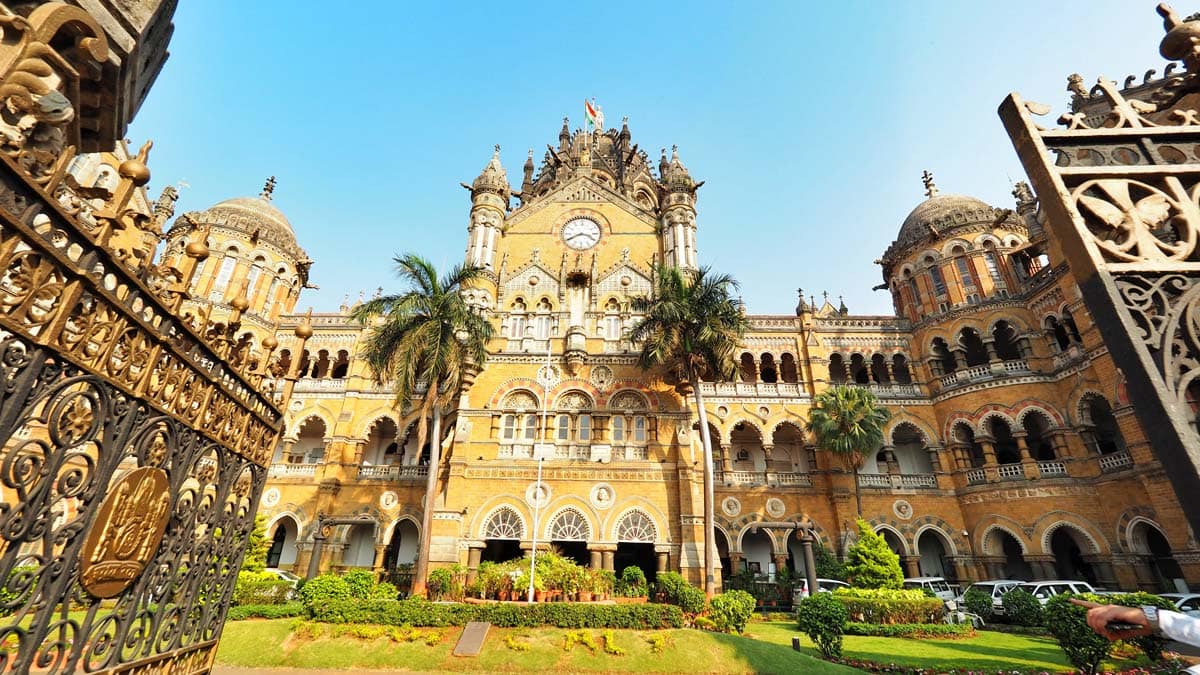
This station displays the greatest example of Gothic architecture in the city. If the Taj Mahal marks the crowning architectural heritage of Moghul power in the subcontinent, the Chhatrapati Shivaji Train Station is perhaps the equivalent for the British Raj. The structure, which combines Hindu, Islamic, and Victorian styles, was opened for service in 1887 and remains the grandest of its kind in Asia and thus earned UNESCO protection in 2004. Click here for location.
Prince of Wales Museum
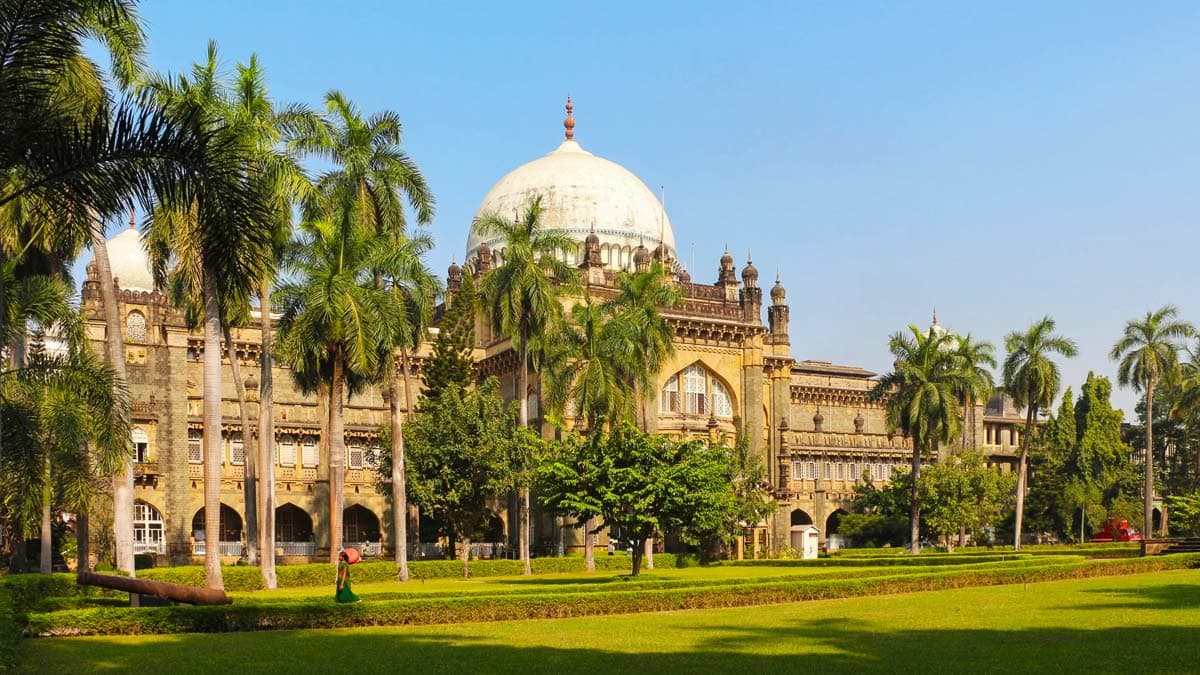
This museum, whose design blends Indian and British architectural influences, is undoubtedly the most expansive in Mumbai. Items displayed include Hindu and Buddhist Statuesterracotta figures from the Indus Valley, miniatures, weapons, and ceramics. As not all items are displayed with descriptions, it’s better to get a guided tour. Entry fee: 300 rupees, photo and video 1000 rupees. Open every day except Monday between 10.15-16.00. Click for location.
Those interested in modern art and international contemporary art works ought to make their way to the National Modern Art Gallery. Click here for location. Alternatively, the Jehangir Art Gallery is a good place for those looking for arty things to do in Mumbai. Click here for location.
Keneseth Eliyahoo Synagogue
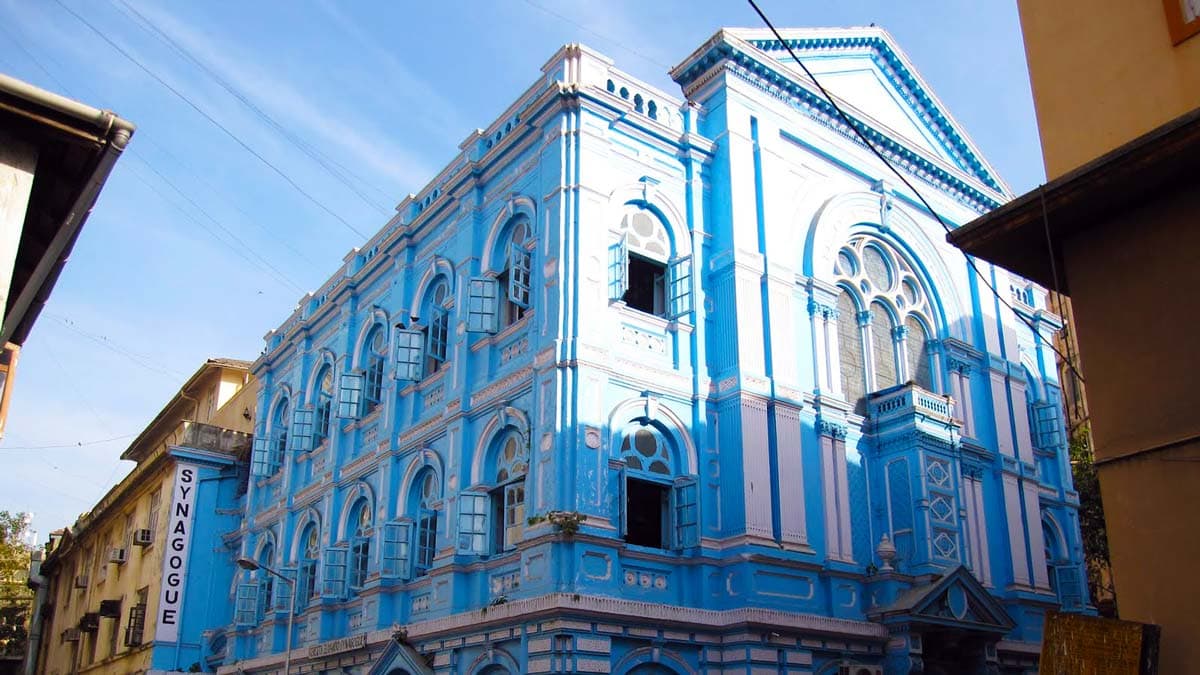
This sky blue synagogue was built in 1884 and is still in active use by the city’s Jewish residents. Its stained glass windows, colorful columns, and chandeliers make it an extremely impressive site. Click here for location.
The High Court
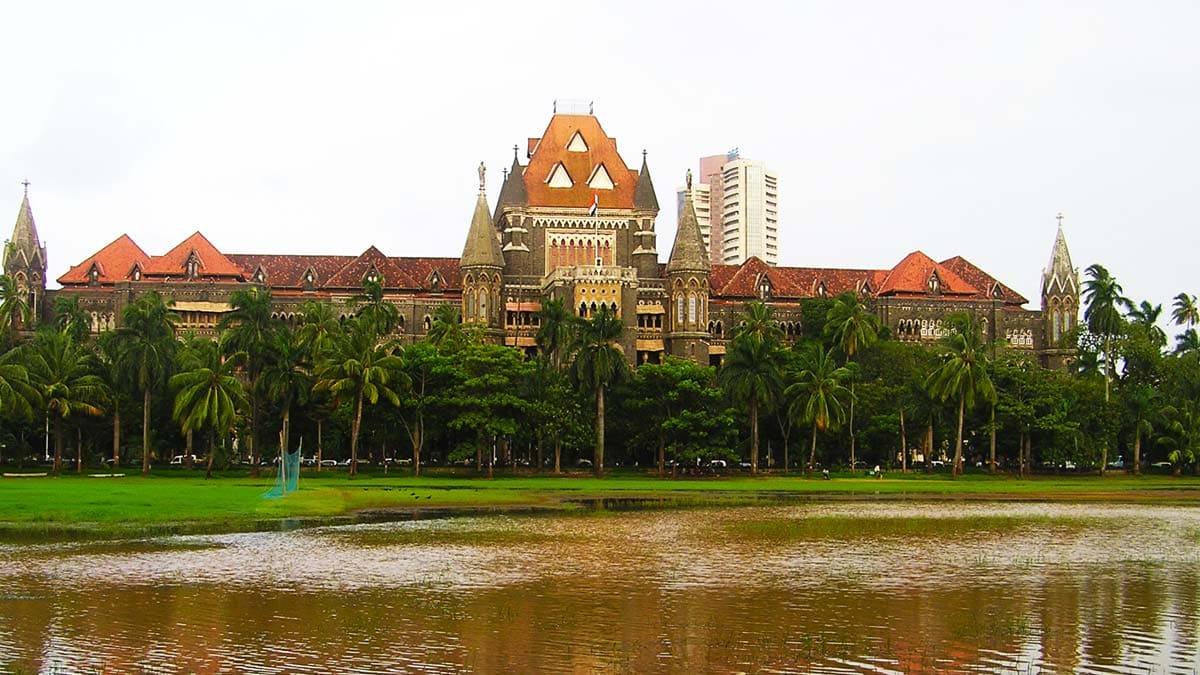
This Neo-Gothic structure, built in 1848, is a symbol of the Indian court system and, as such, carries the emblem of the one-eyed monkey – an allegory of justice. You can enter the building, inspired by Teutonic castles in its design, and even sit down to watch a public case in progress. Click for location.
Mumbai University
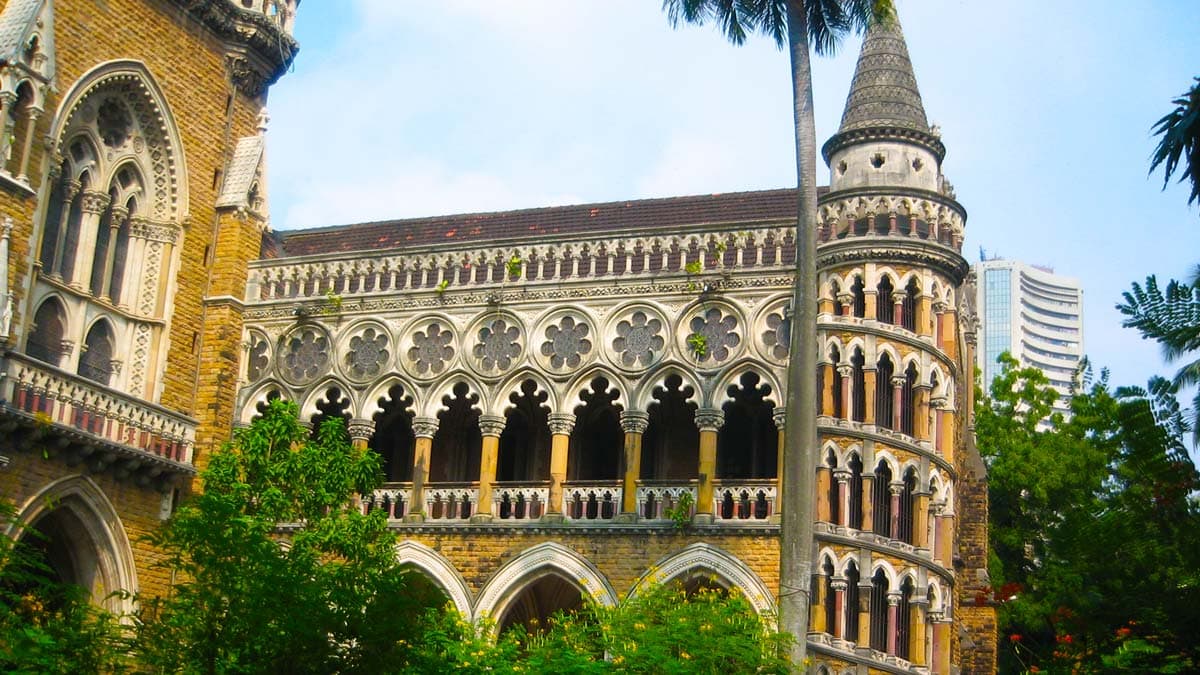
This French Gothic style university looks almost church-like and is the work of Gilbert Scott, the architect behind London’s Saint Pancras Station. Visitors can enter both the library and main hall. Click for location.
Saint Thomas’ Cathedral
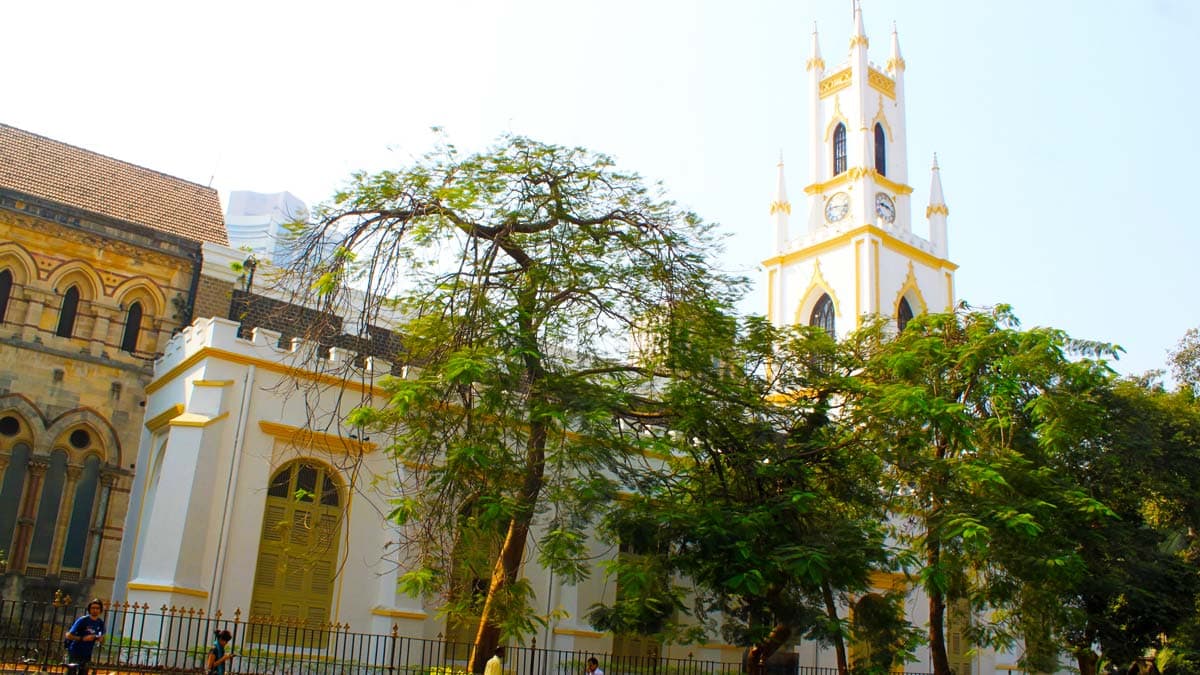
This cathedral, whose construction began in 1672 but wasn’t completed until 1718, is the oldest example of English architecture in the city. An interesting mix of colonial and Byzantine architecture, the cathedral has recently been restored and is a great site for those looking for historical things to do in Mumbai. Click for location.
The Money Museum
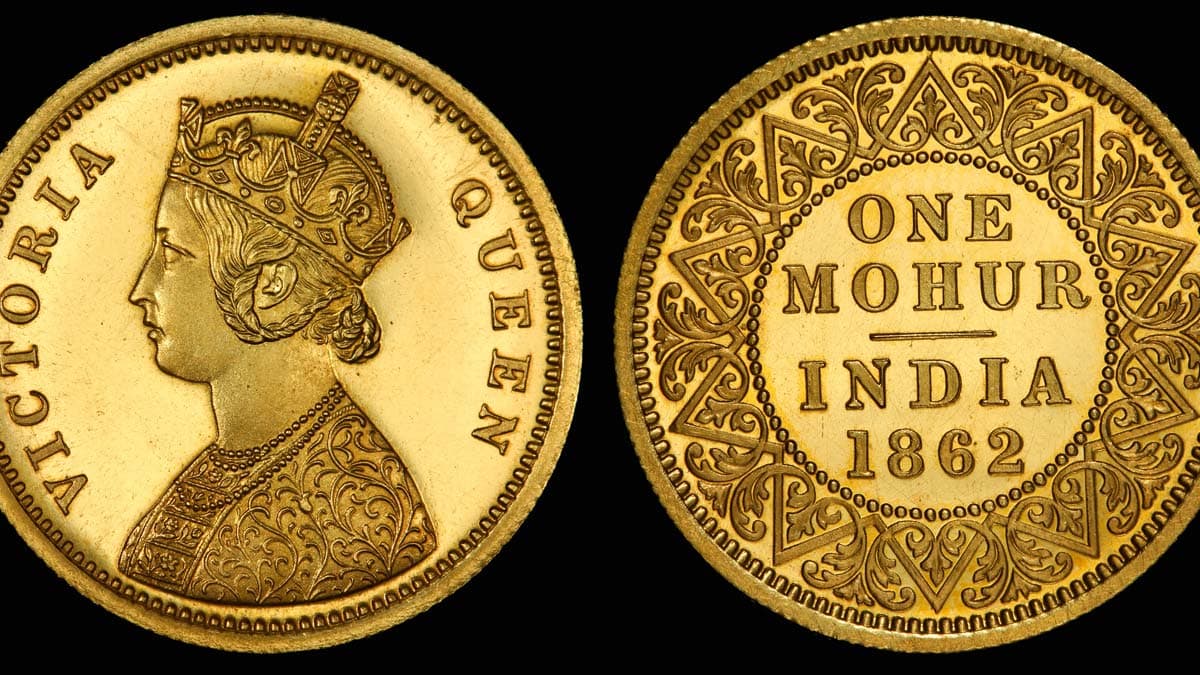
This museum features examples of currency from throughout Indian history, from the sixth century BC, to those used in Indian-European trade, and the Gandhi-laiden notes in current circulation. The museum also features the world’s smallest recorded coinages. Open between 10.45-17.15. Entry is 10 rupees. Click for location.
Mani Bhawan
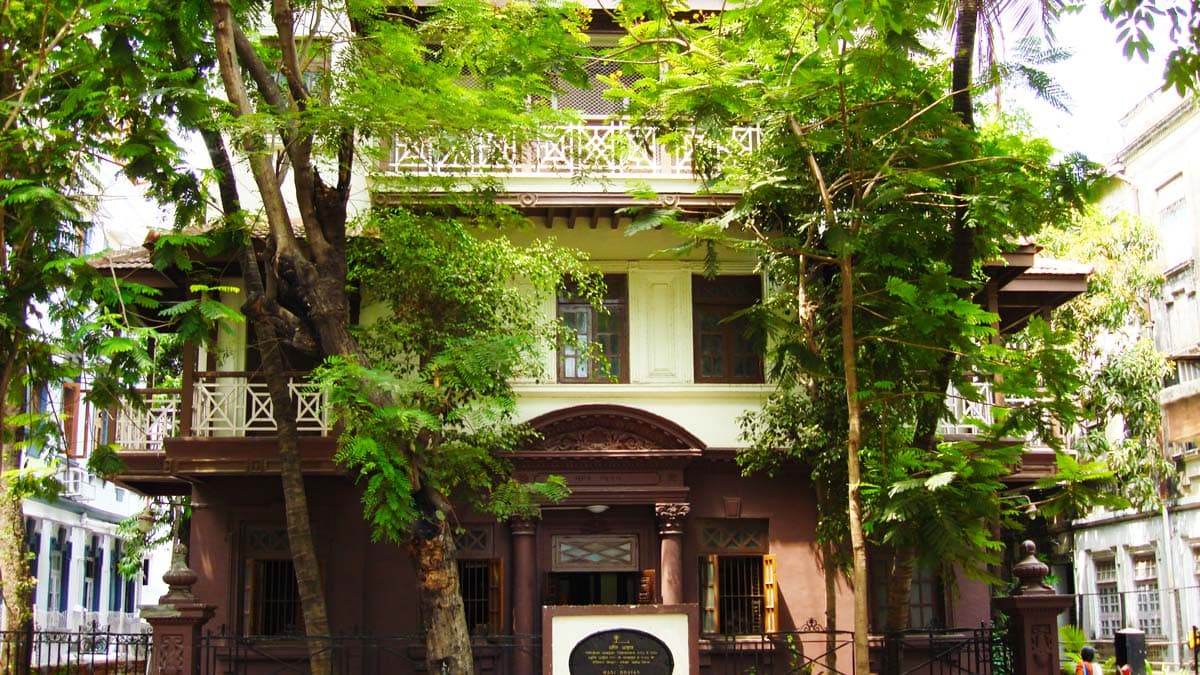
The home Gandhi resided in during his stay in Mumbai from 1917-1934 has since been transformed into a museum. The house he stayed in with his close friend Revashankar Jagjeevan Jhaveri served as a command post during his years of pacifist protest. It was from here that Gandhi’s 1932 campaign of Civil Disobedience was born. The museum contains photographs as well as correspondence since to the likes of Adolf Hitler and Franklin D Roosevelt and is another treasure for those looking for history-related things to do in Mumbai. Click for location.
Babulnath Temple
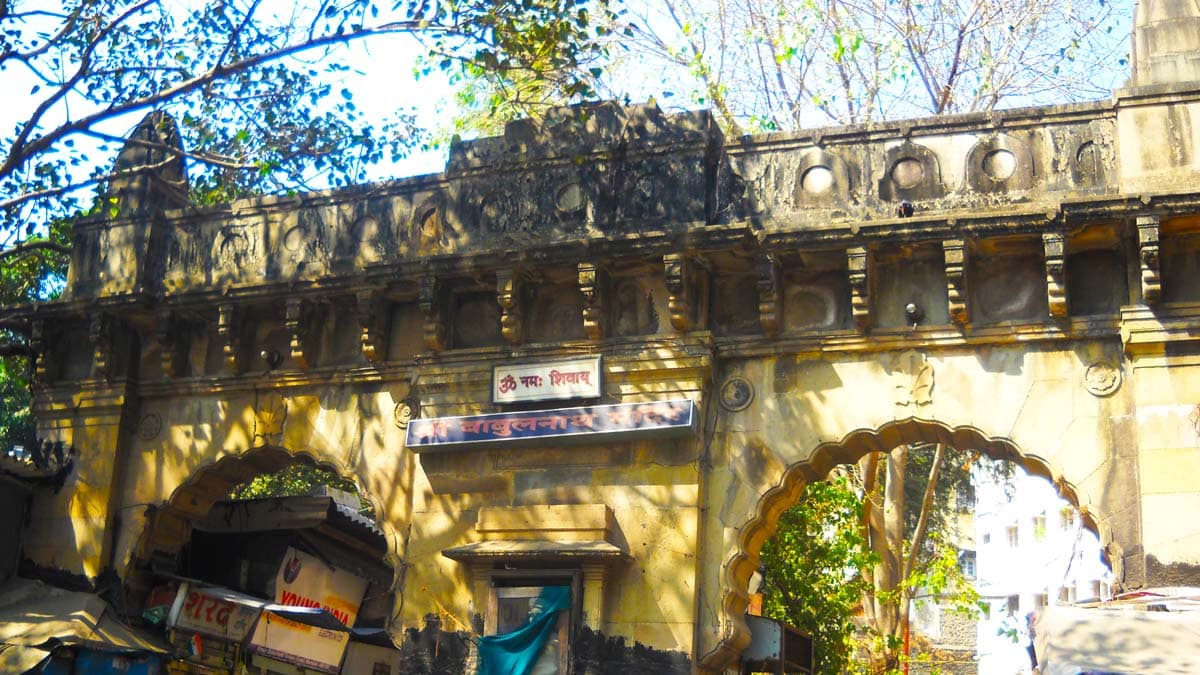
This 12th century building is the oldest in the city. Dedicated to the god Shiva, the temple was long-since abandoned and much excavation work was needed to recover it to its original form. It was reopened for worship in the 18th century. Click for location.
Nehru Center
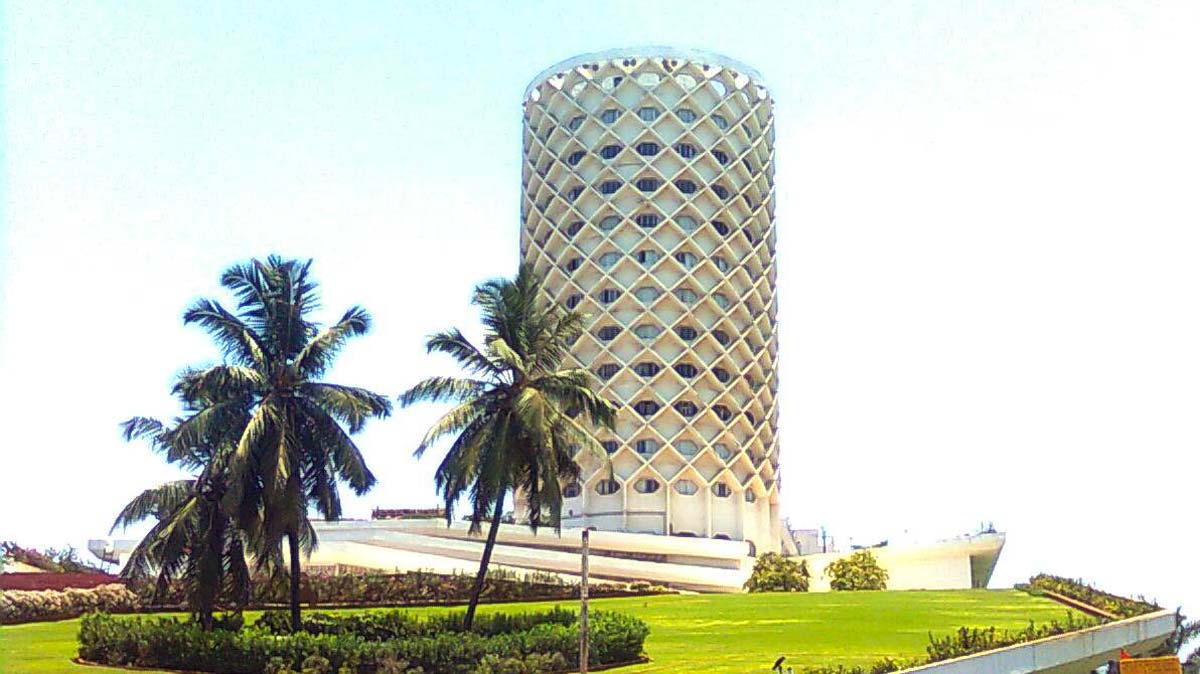
The Nehru Center is dedicated to Pandit Cevahirlal Nehru, a towering figure in the Independence Movement and the country’s first president. The monument and information center was built in 1972 and also functions as a planetarium and function center. Click for location.
The Tomb of Haji Ali
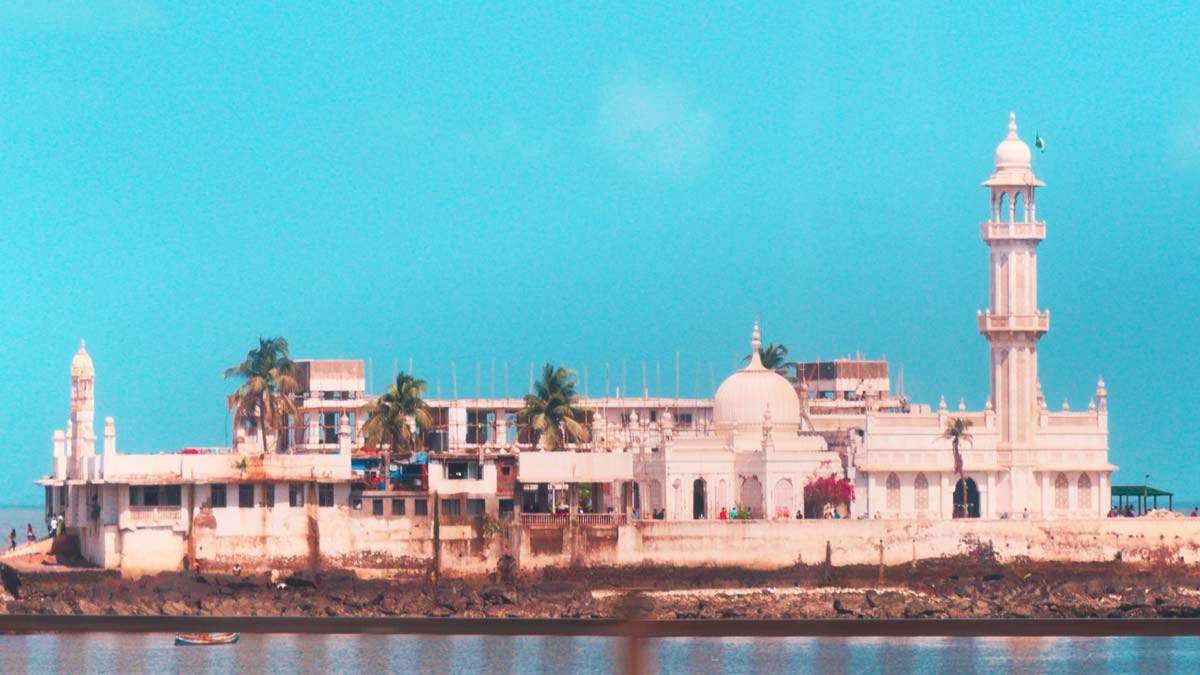
This mausoleum lies on an island 500 meters out from the coast and is one of the most sacred Muslim sites in the city. Legend has it that Haji Ali was a rich local merchant during the 15th century, who parted with all his wealth to leave for Mecca. He unfortunately did not return alive, but his body was found washed on the shores of the island. It was then that a mausoleum was built that now serves as a shrine and is connected to the mainline via a concrete walkway. Click for location.
Antilla Building
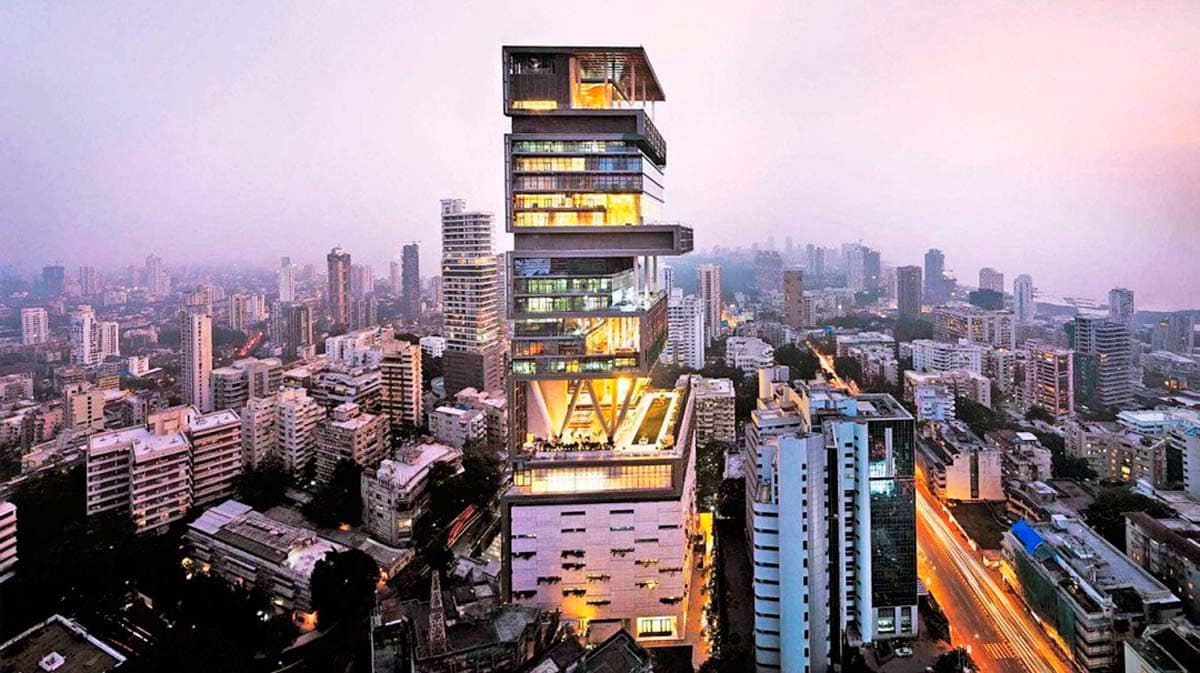
This rather atrocious building is the world’s largest private residence, and at two billion dollars, is popularly tagged as the most expensive home in the world. Owned by the fifth richest man in the world, Mukesh Ambani, the 173 meter tall structure is made up of 27 floors, the first six of which house Ambani’s collection of 168 cars. The 7th houses quarters for his personal car service. The house is complete with its own spa, a number of pools, and a ball hall. The Ambani family live on the highest floor below three helicopter decks. The building has a staff of 600 and can withstand earthquakes of up to 8 on the Richter scale. Click for location.
BEST AREA TO STAY IN MUMBAI
The Colaba area is the best hotel location. Here are a few suggestions;
The Taj Mahal Palace
Those who fancy nothing short of a palatial visit ought to try the Taj Mahal Palace, the city’s most luxurious hotel. Click for more details and booking information
The Oberoi
The Oberoi is located at the end of Marine Drive, and offers sea-view rooms, clean service, and a quality restaurant with five-star luxury. Click for details and booking information.
Abode Otel
It’s rather hard to find boutique hotels in Mumbai, but this 20 room establishment in Coloba is the first of its kind in the city. The colonial building, kitted out with vintage furnishings, is a sumptuous location for those after a special place to stay . Click for details and booking information
Hostel Mantra
A centrally located hostel popular with backpackers. Breakfast is included. Click for details and booking infomation
Other Indian Hotels
For more Indian hotels, click here.
DINING IN MUMBAI
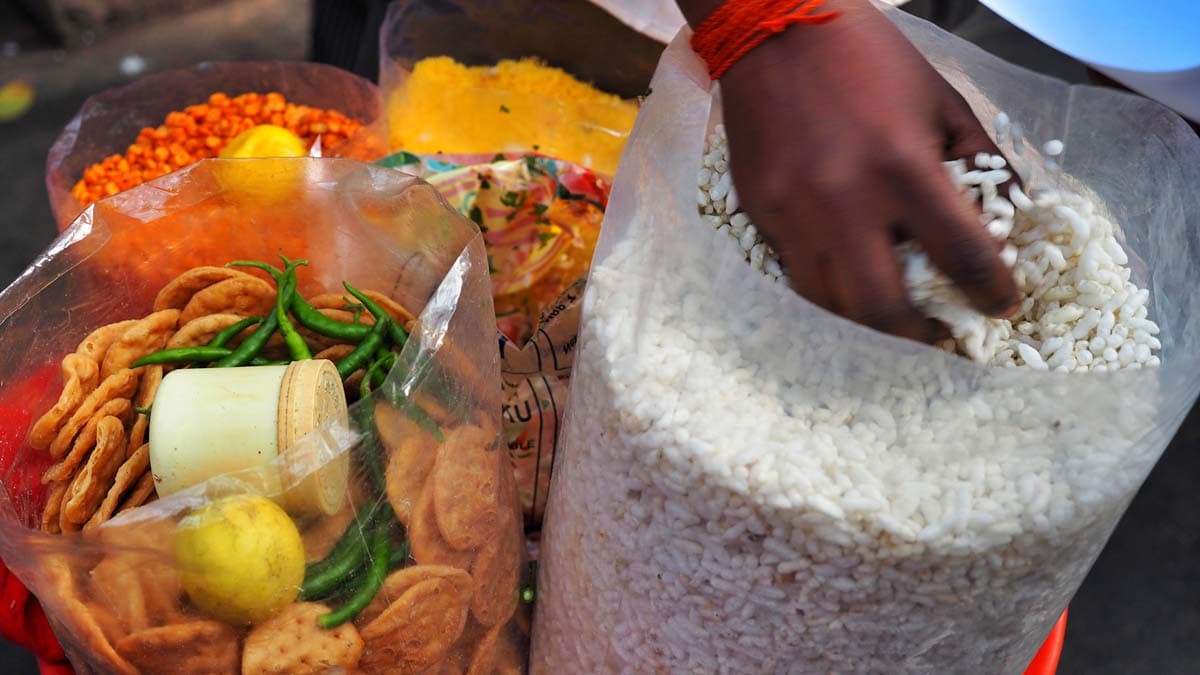
Indian restaurants outside of India generally specialize in Northern Indian cuisine of a specifically Mughal heritage, including curries, kebabs, and naan breads – and the main cities and tourist centers, such as Mumbai, all serve these classics and more. Here you can find regional delicacies from Goa, Kerela, Kashmir, the Bengal region, and more. However, due to its huge range of street food and wealth of food stands and markets, Mumbai is most famed for its snacks. Vada pav, pani puri, bhel puri, sev puri, dahi puri, dosa, pav bhaji, misal pav… All are available on every street corner – just bear in mind our warnings!
Indigo
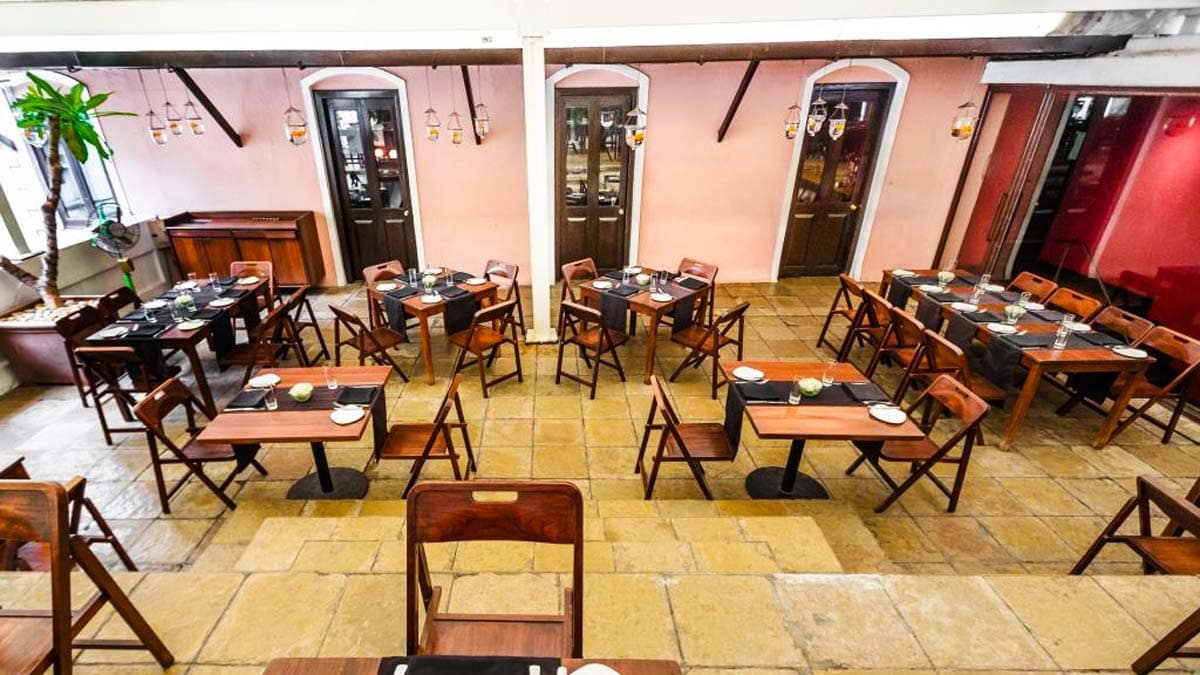
Indigo by name and indigo by nature, this bar is recommended as one of the best bars to visit in the world. The establishment serves an eclectic mix of European and Asian treats – with the spicy Thai dishes being definitely worth checking out. Address: 4, Mandlik Rd, Colaba, Behind Taj Mahal Hotel. Website Tel: +91 22 6636 8999 Click for location.
Woodside Inn
The Woodside Inn is an English-style pub that stands as a remnant of British influence on the city. Known for its musical and comedy nights, the pub hosts cultural activities like drinking evenings attended by food bloggers and famous chefs. Address: Indian Mercantile Mansion, Wodehouse Road, Opposite Regal Cinema, Colaba Causeway, Colaba. Tel:+91 22 2287 5752 Click for location.
Tote on the Turf
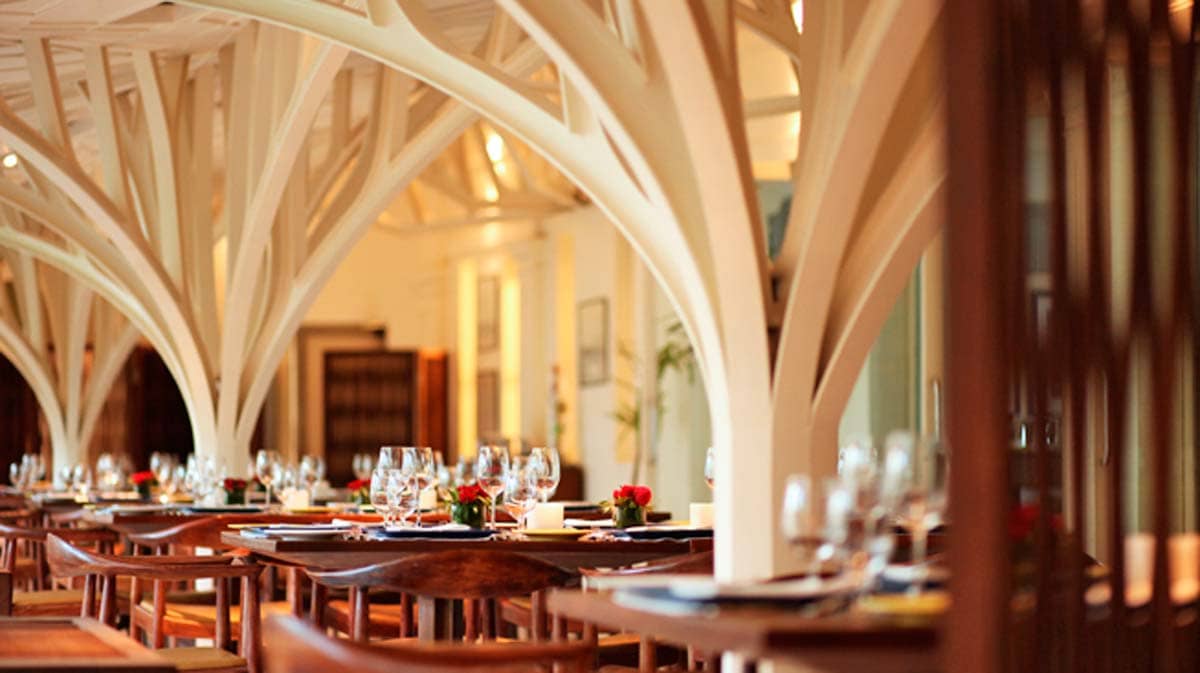
Designed by one of India’s foremost architects, Kapi Gupta, Tote on the Turf is ideal for cocktails. Address: Gate No. 5 & 6, Mahalaxmi Race Course Website Tel: +91 22 6157 7777 Click for location.
NIGHT LIFE IN MUMBAI
Mumbai is the city that never sleeps, with some amazing options when it comes to partying.
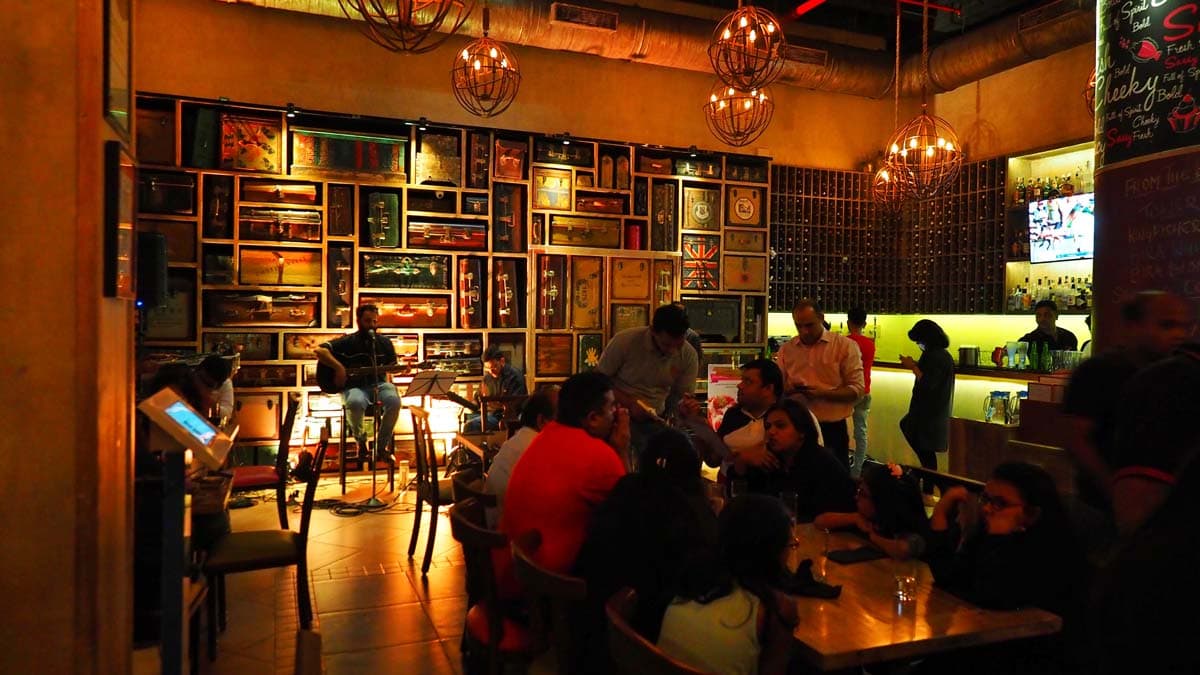
R’Adda
R’Adda, located on the terrace of the Ramee Guestline Hotel is the best place to party in the city. With a new theme every night, the club entertains with amazing cocktails, and snacks including pizza, chicken sandwiches, and mini burgers. Address: 3, Ramee Guestline Hotel, AB Nair Road, Juhu Tel: +91 98337 51034 Click for location.
Aer
AER is a bar and lounge located on the 34th floor of the Four Seasons Hotel where visitors can grab a cocktail and look out over the Arabian Sea and a panoramic view of the city. It’s a little pricey, but worth every rupee. This is particularly popular with Mumbaikars for after work drinks on Fridays. Address: 1/136, 34th Floor, Dr. E. Moses Road, Worli Tel: 91 22 2481 8444 Click for location.
Drop
DROP is a pretty high energy club. It has wide open sitting spaces, a warm atmosphere, and an extensive bar. The club serves mostly European dishes. Address: No.G1/B, Krystal Building, Below Hakkasan, Waterfield Road, Bandra West Tel:+91 22 4229 6000 Click for location.
TRAVELING THROUGH INDIA?
Plus, if your plans change, and you end up with more time, our Indian Travel Guide will put you in the right direction for things to do in Mumbai and the subcontinent at large.
WHERE IS MUMBAI?
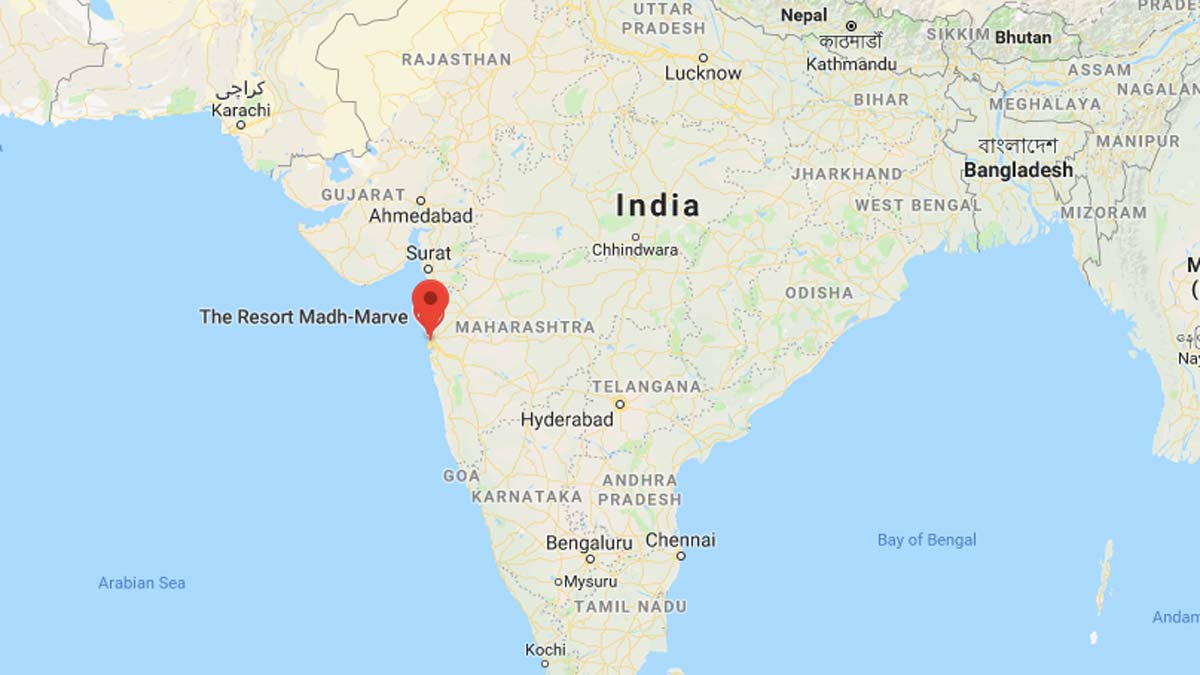
Mumbai is the largest city along India’s western, Arabian Sea coast.
Flights between Mumbai – Delhi take two hours.
Trains between Mumbai – Udaipur cover the 760 kilometer journey in around 13 hours.
A Vivek Express train from Mumbai to Jodhpur takes just over 16 hours.
TRAVEL TO MUMBAI
Planes fly to Mumbai’s Chatrapati Shivaji International Airport’a (CSIA) from all over the world, and direct flights are available from most major cities. Regular internal flights also run daily to and from the capital. When you arrive, you have a number of options for getting to the center. Taxis to the Colaba area, for instance, will set you back around 500-700 rupees and can be arranged inside the terminal building. Shuttles are also available going to various parts of the city, and these work out much cheaper and tourist tickets can also cover transit across various forms of public transport in the city across the day of arrival.
_ . _
Hope you enjoyed our list of things to do in Mumbai. For our other city guides, you can check our India Travel Guide.

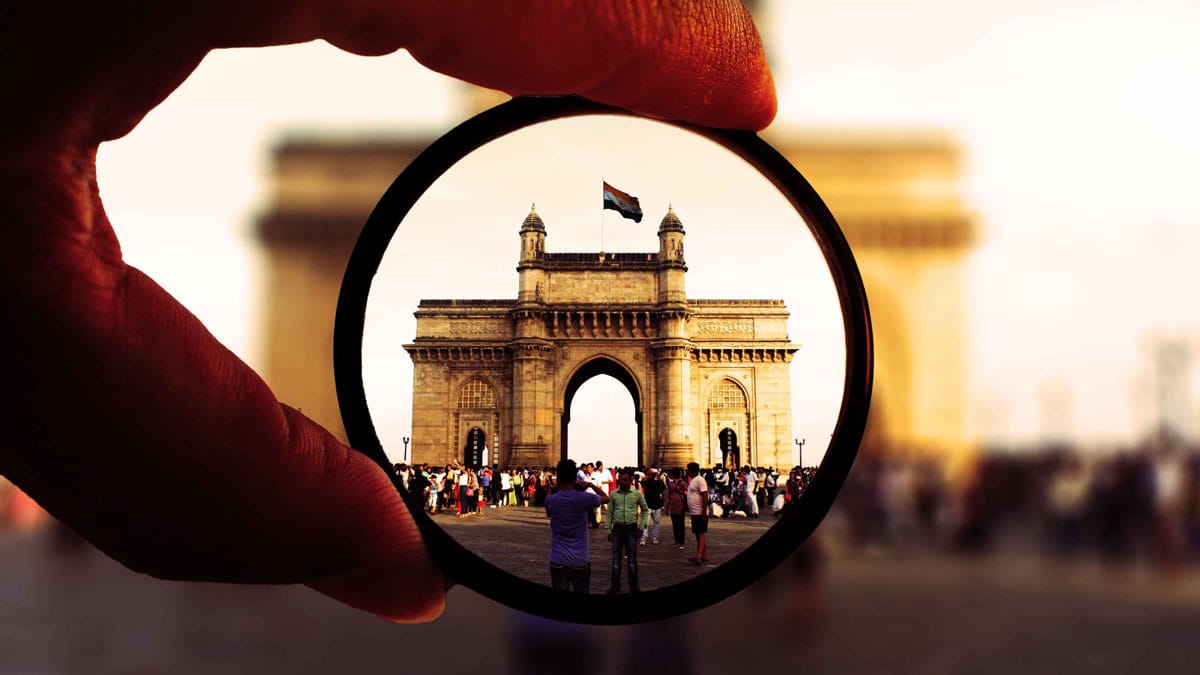
Great blog post.Helpful and informative tips. I like it thanks for sharing this information with us
Great blog post.Helpful and informative tips. I like it thanks for sharing this information with us